The past two weeks have rushed by, and lots happened, so it's taken me a while to catch up with this blog post. Without further ado, here is our Kyoto trip (which actually happened March 18-21, during our four day weekend).

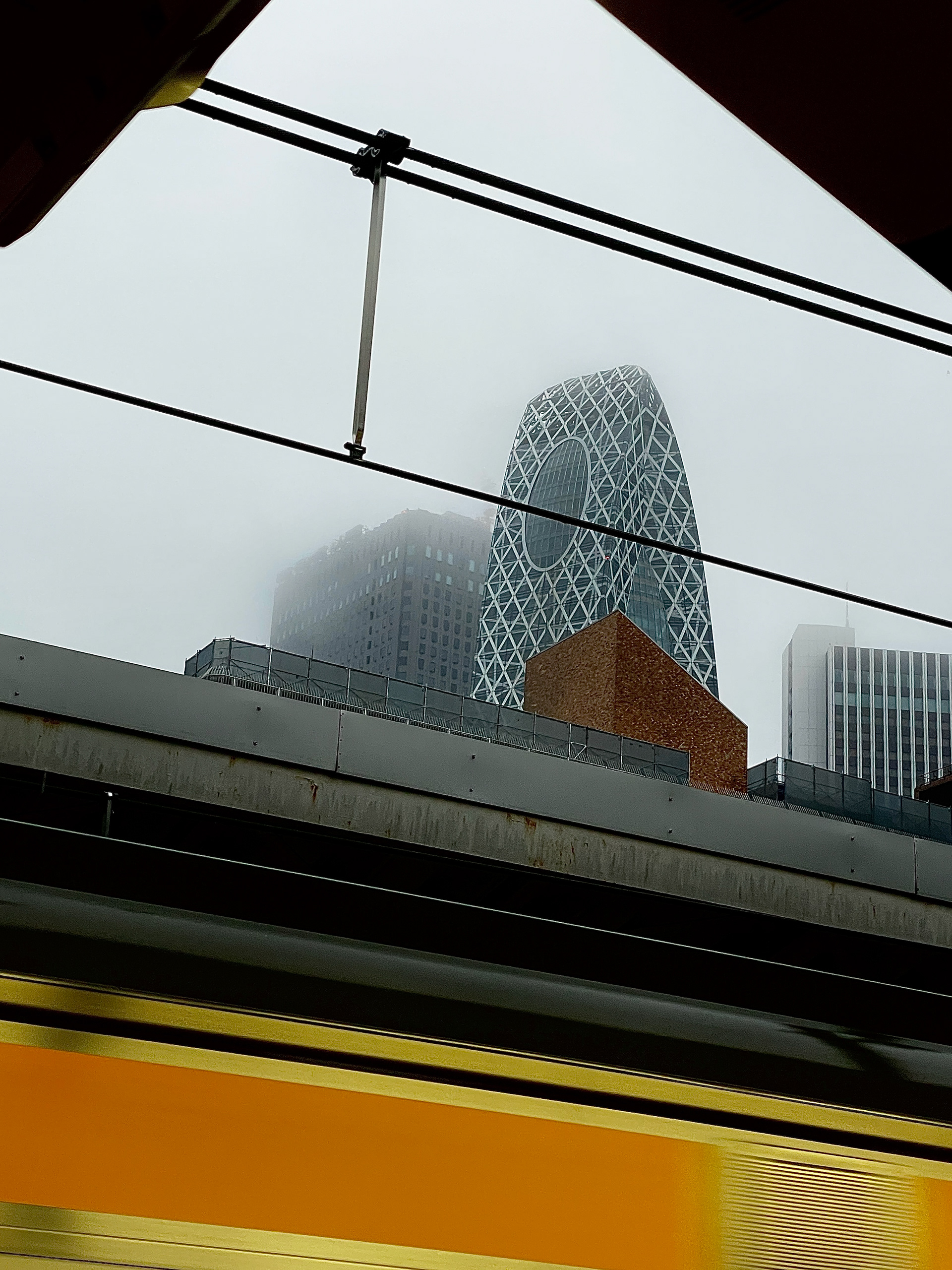




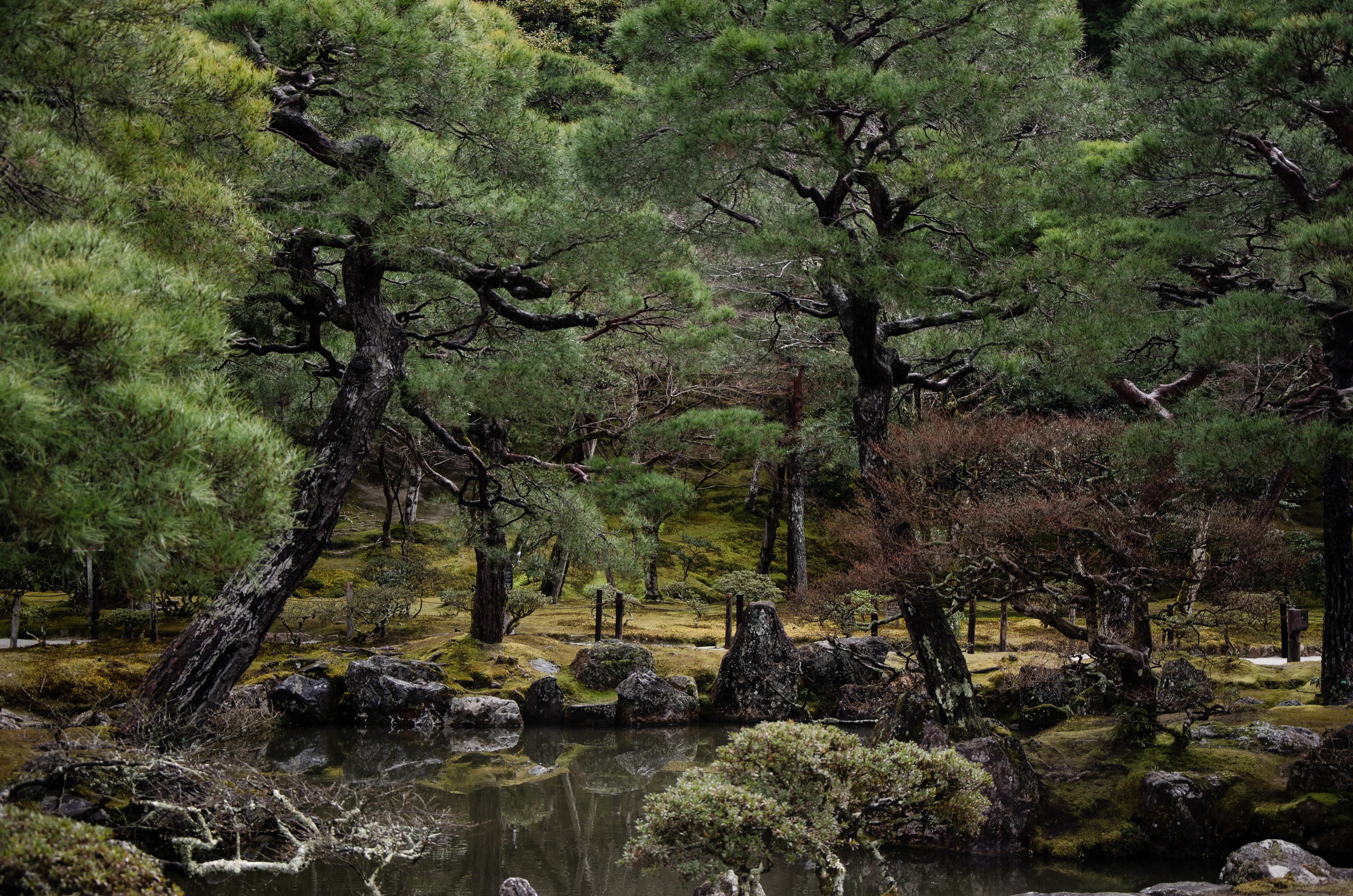

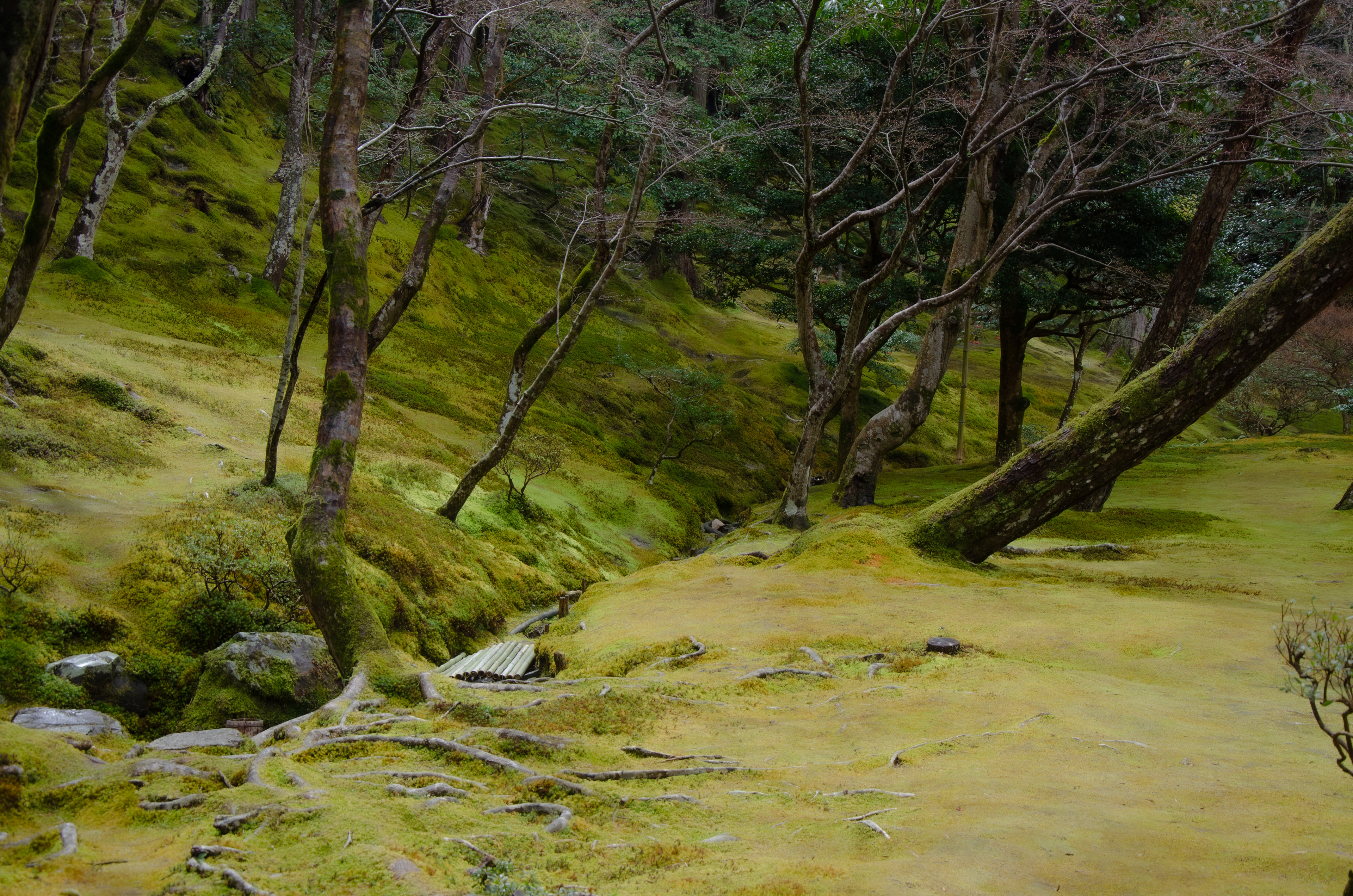
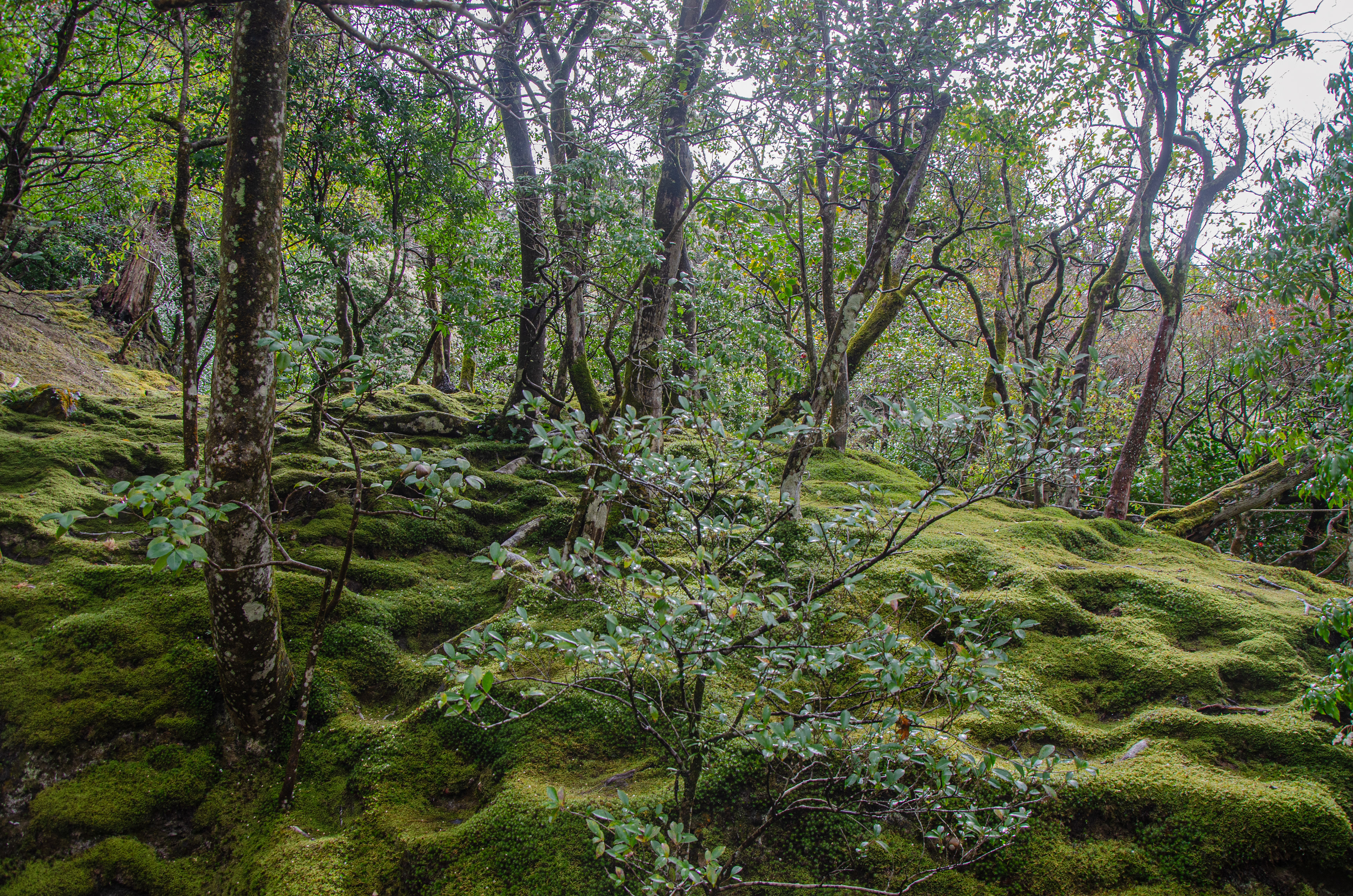
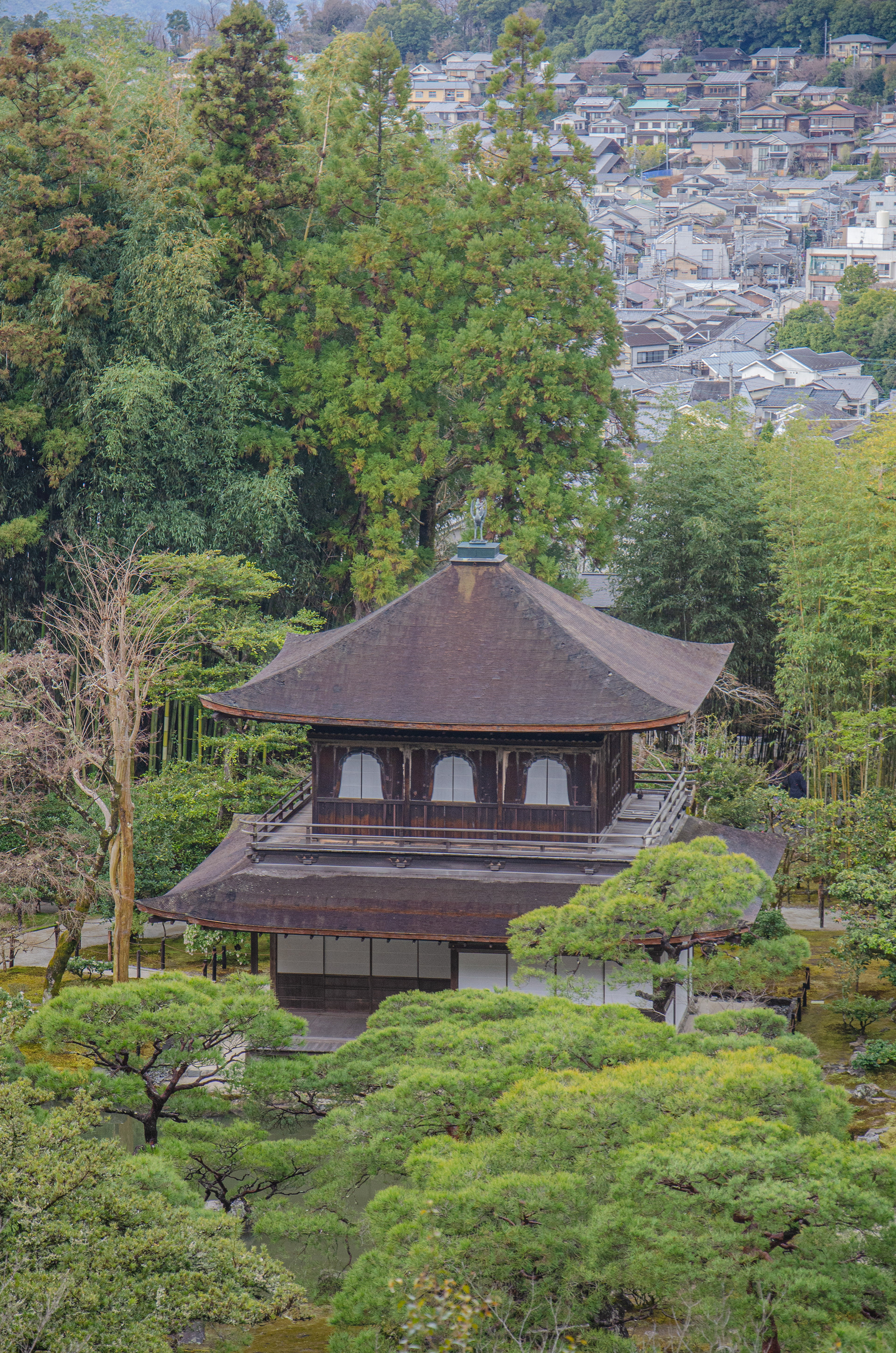
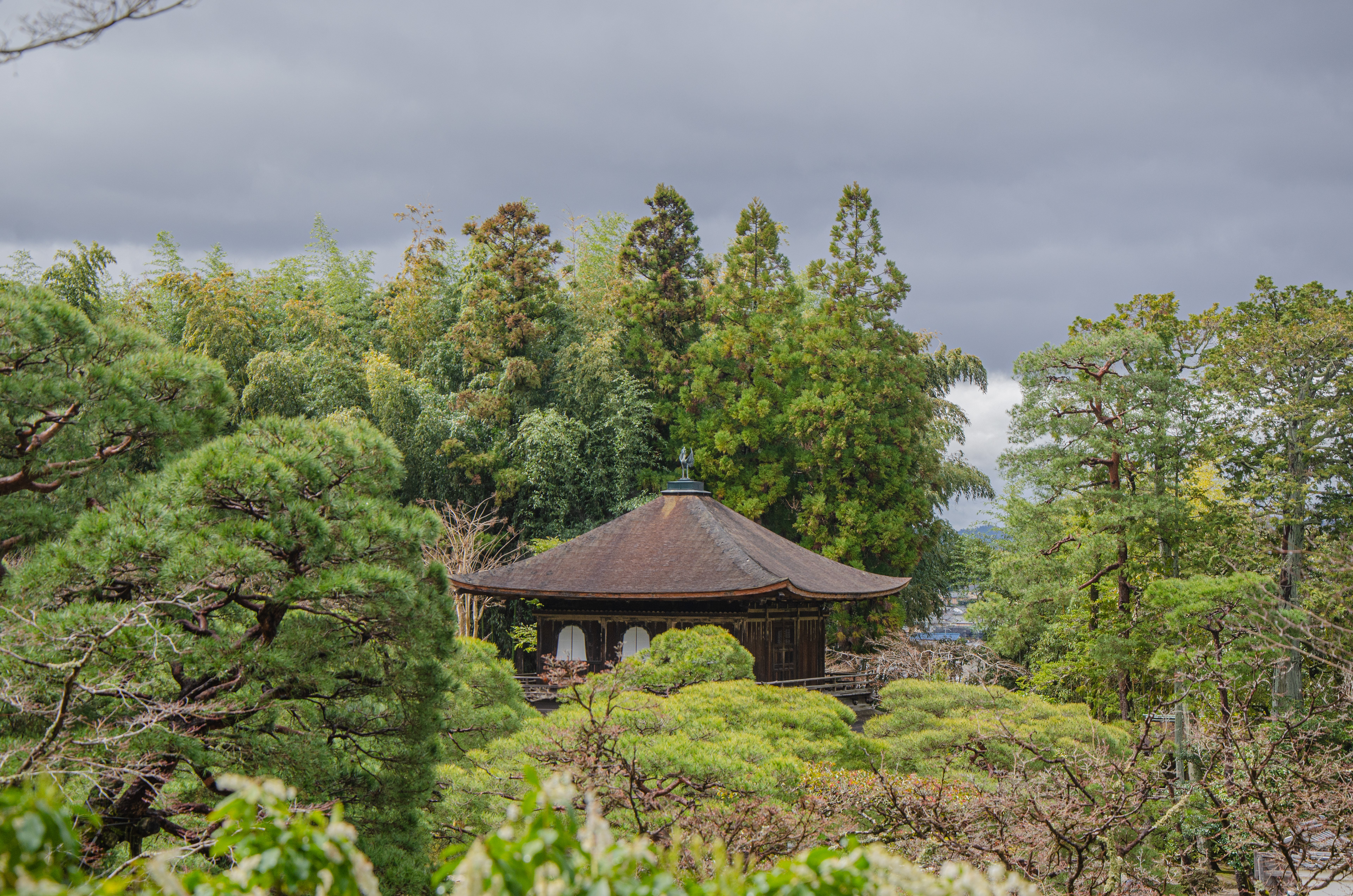

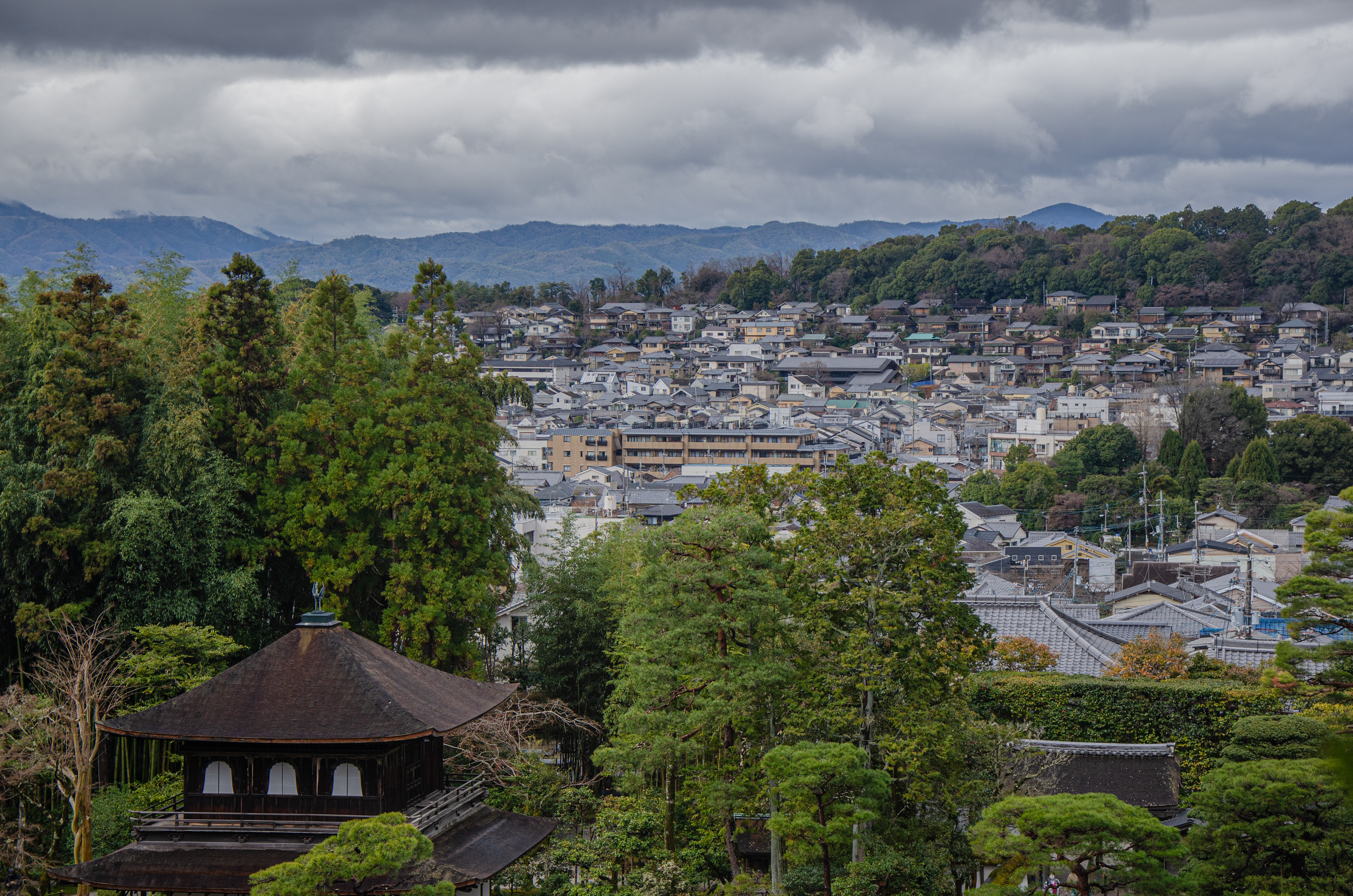






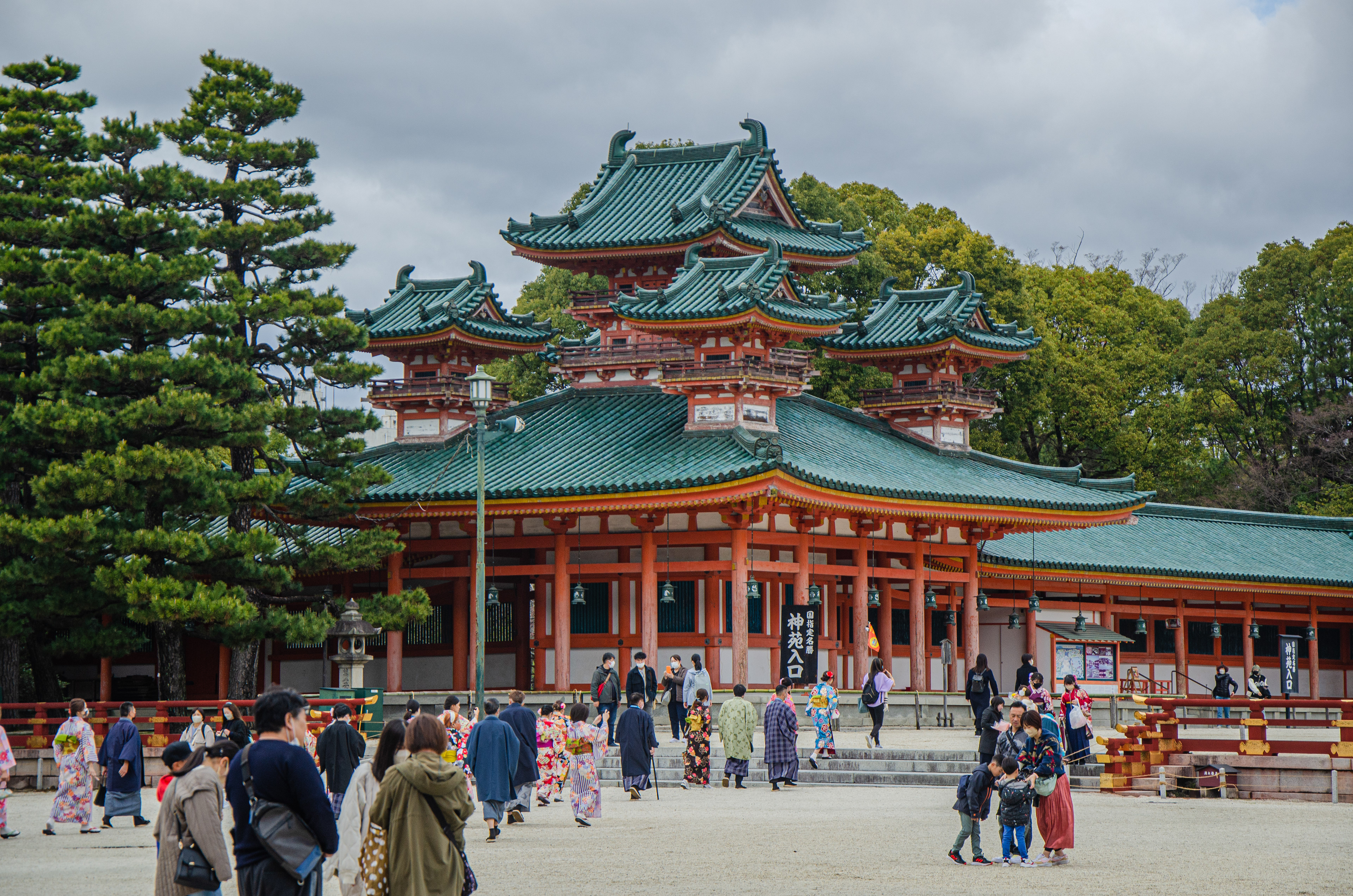
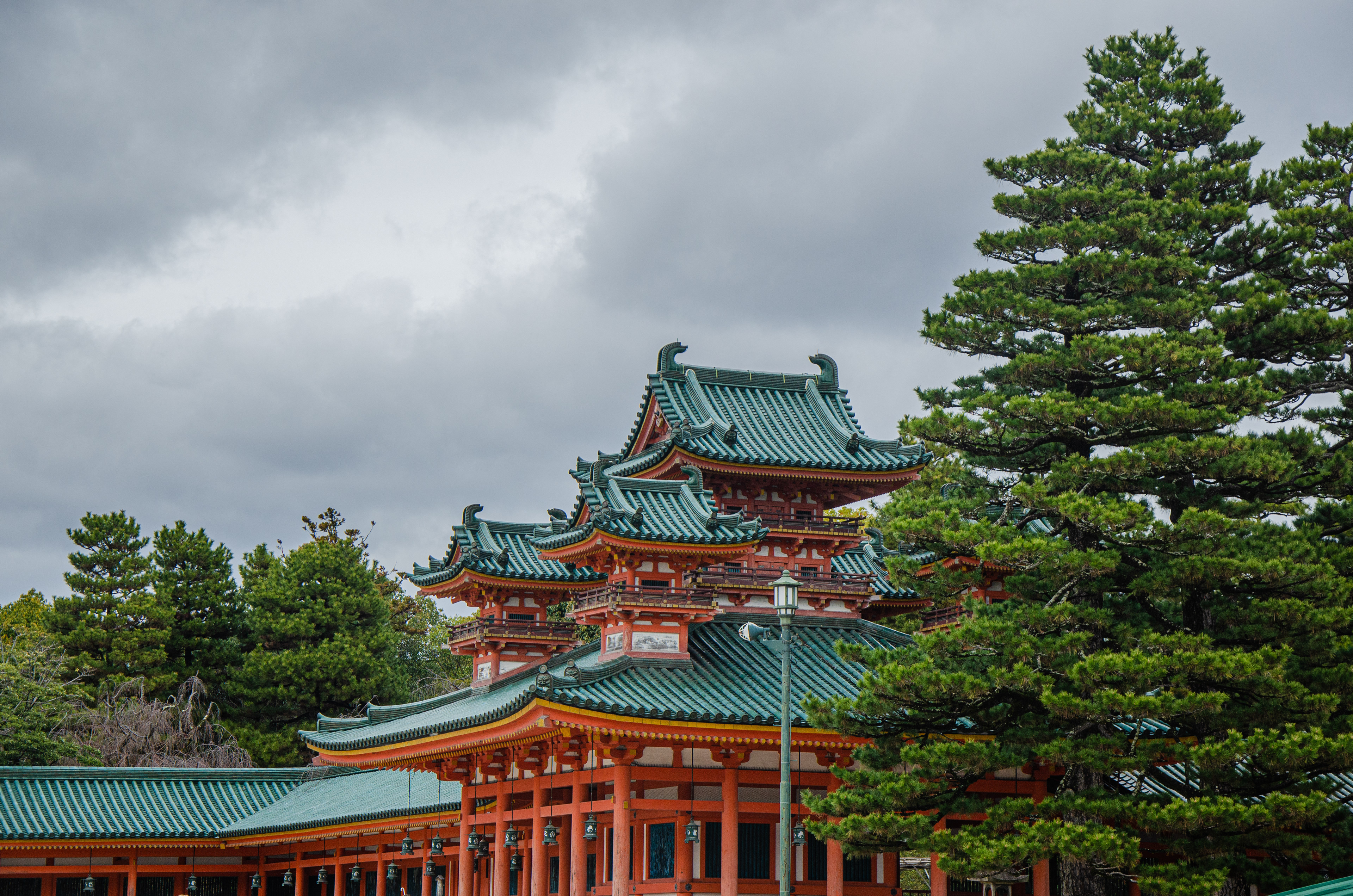

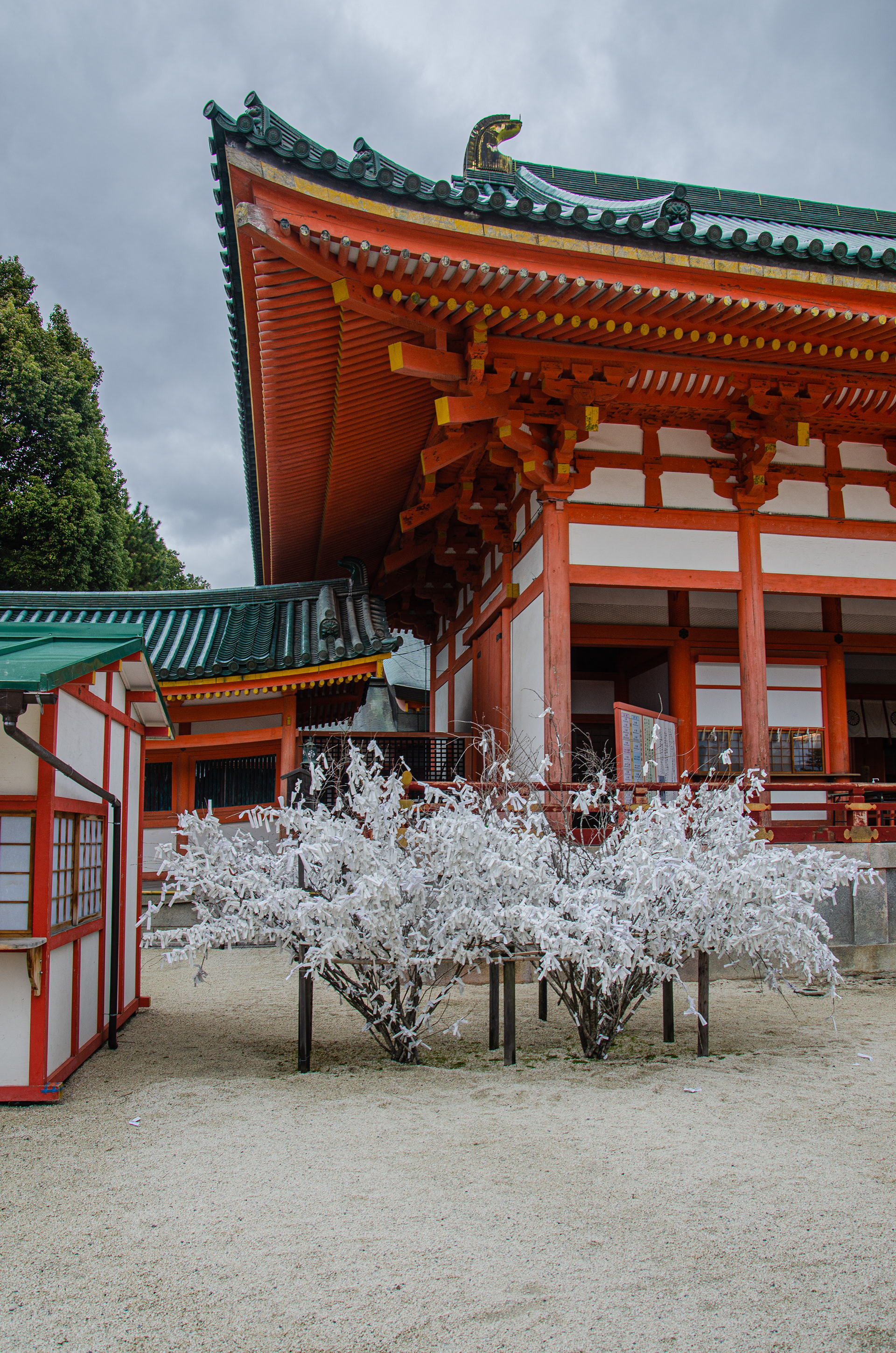

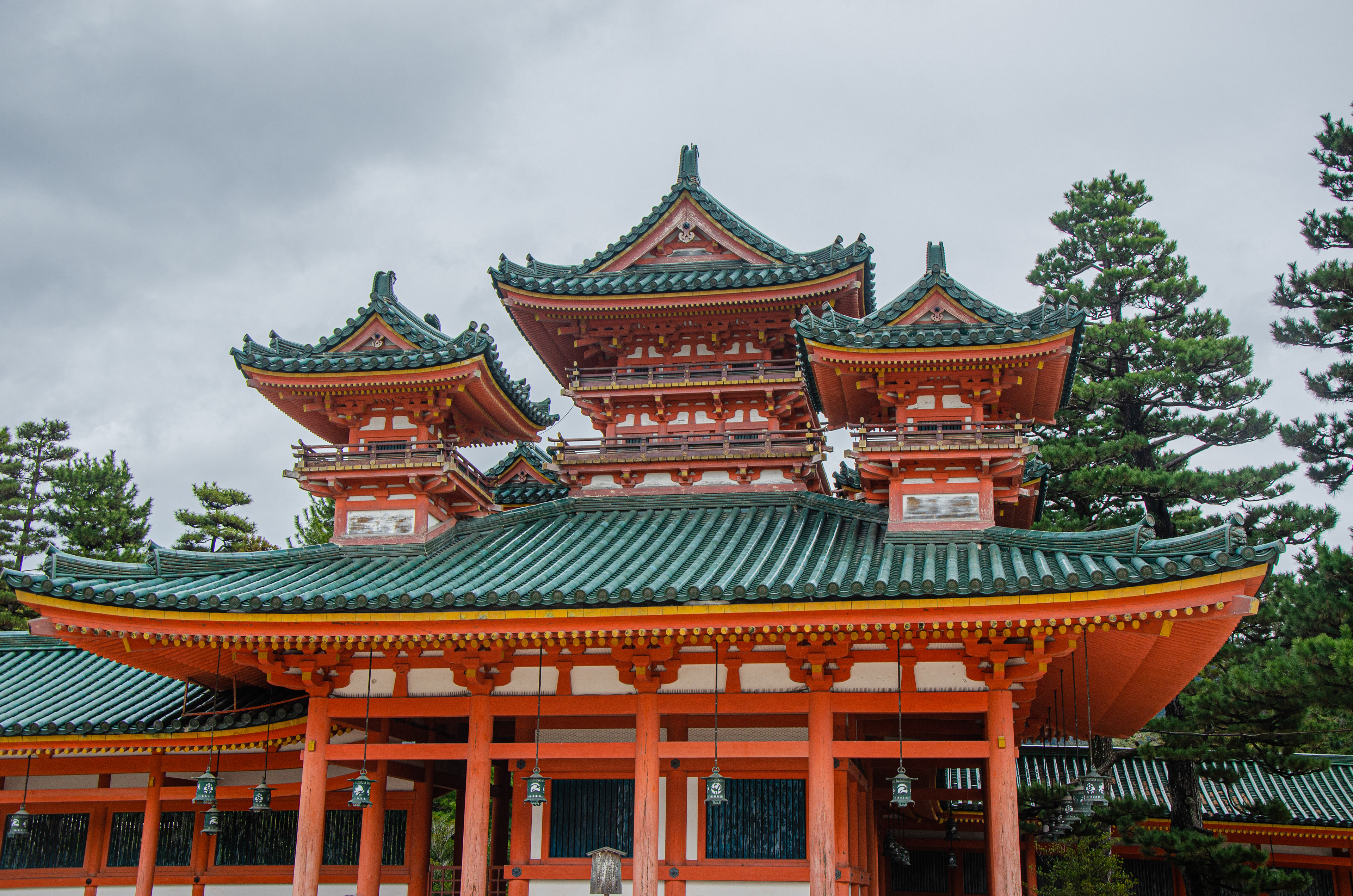
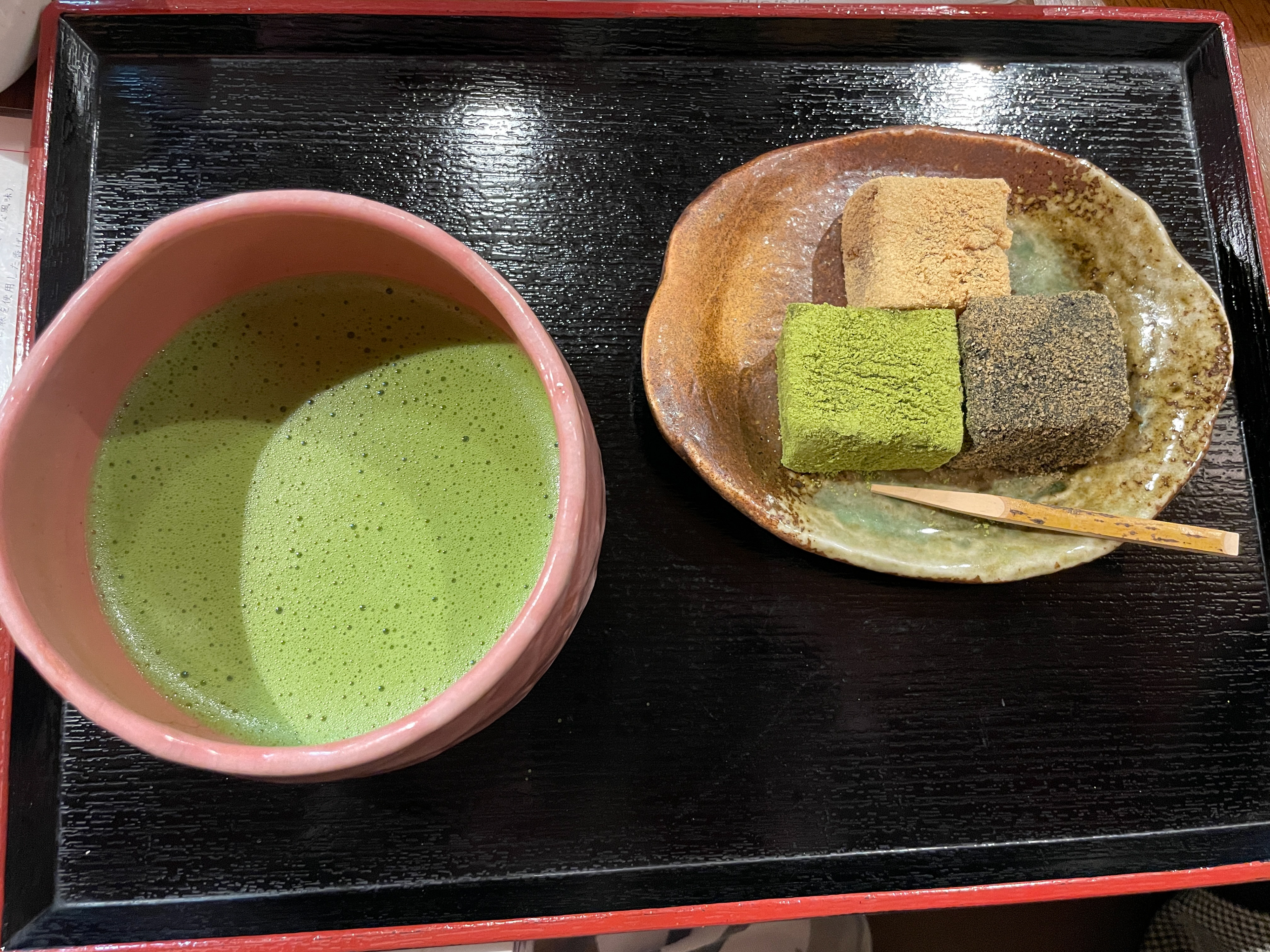
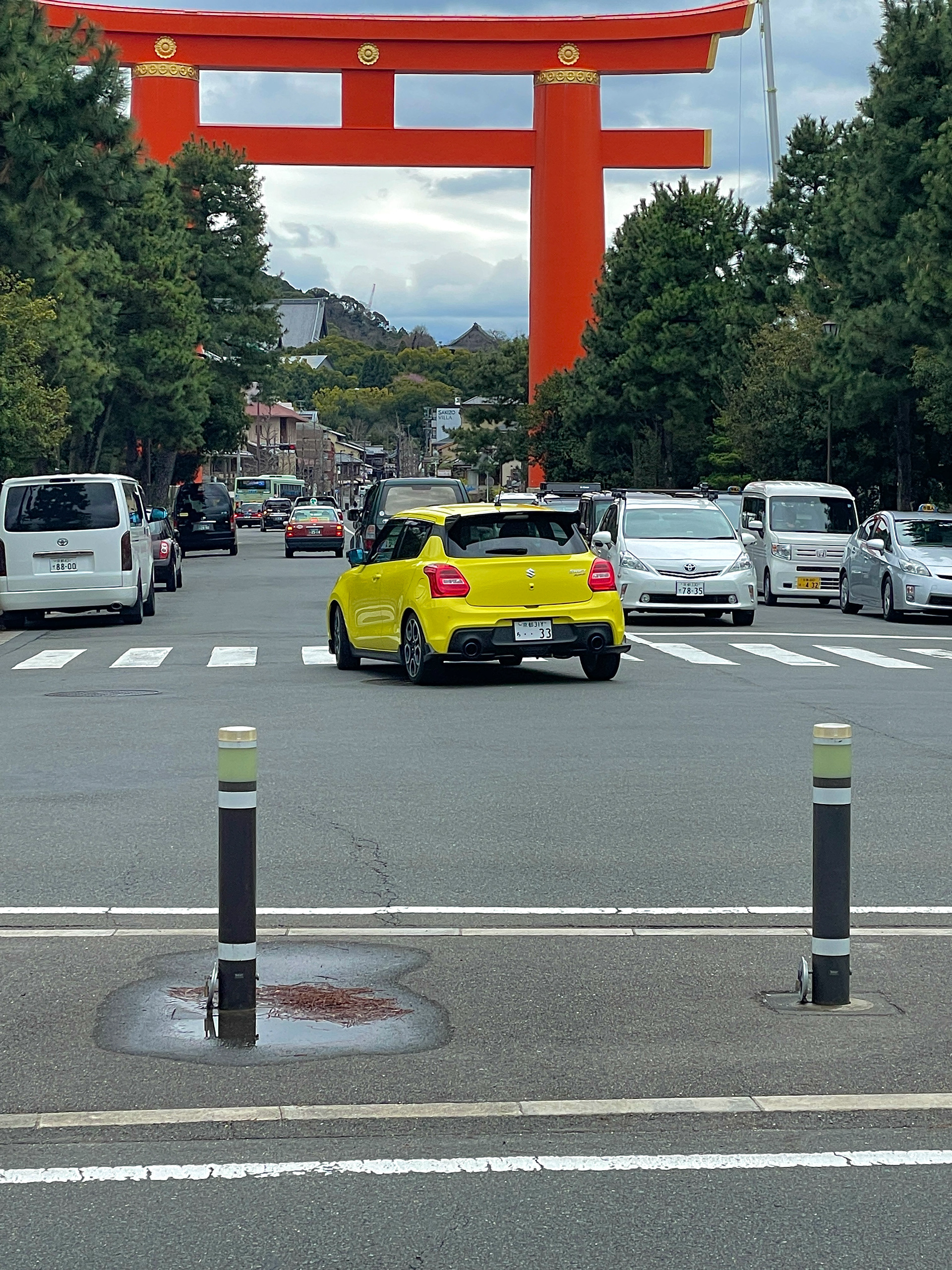
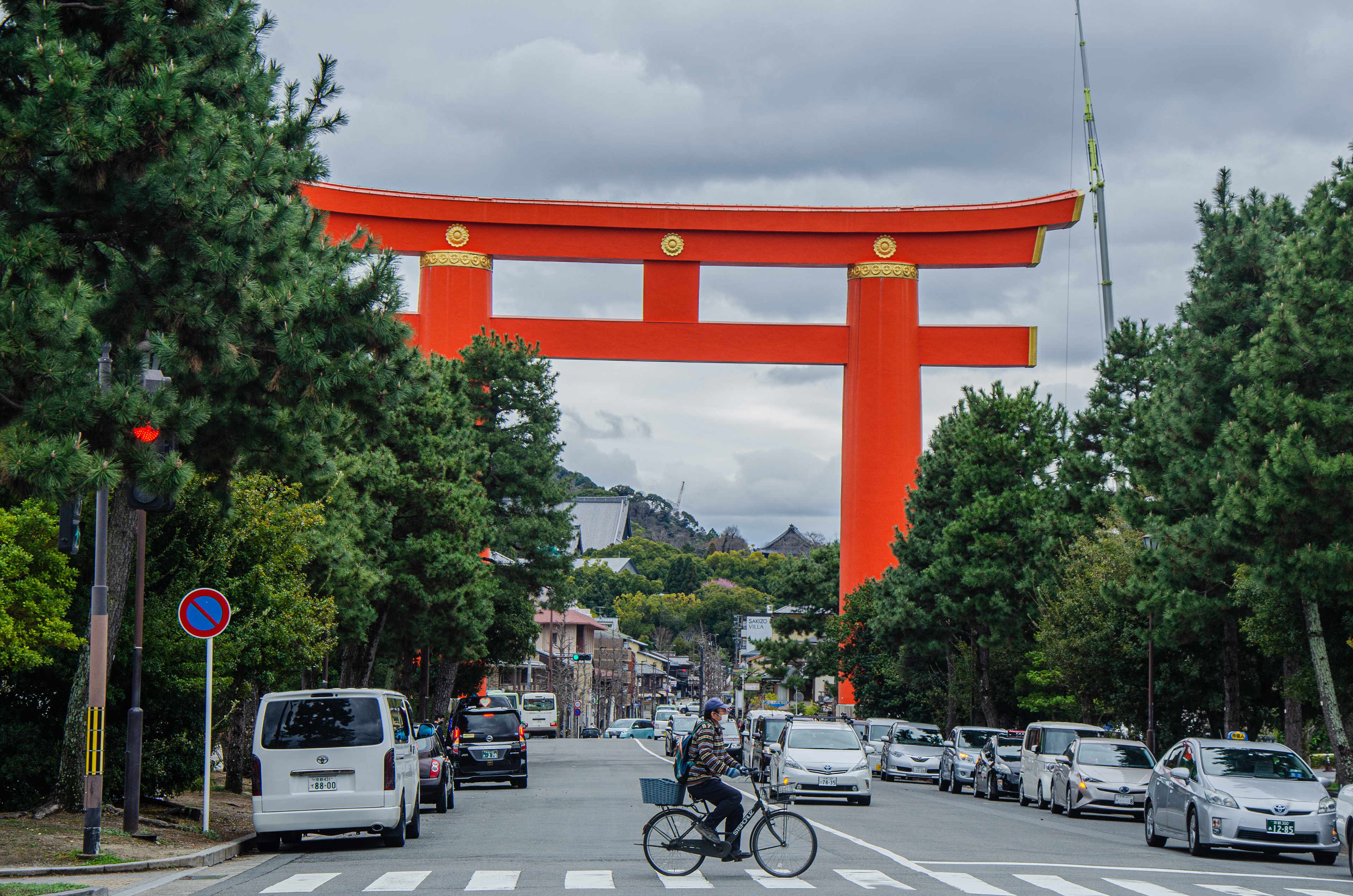

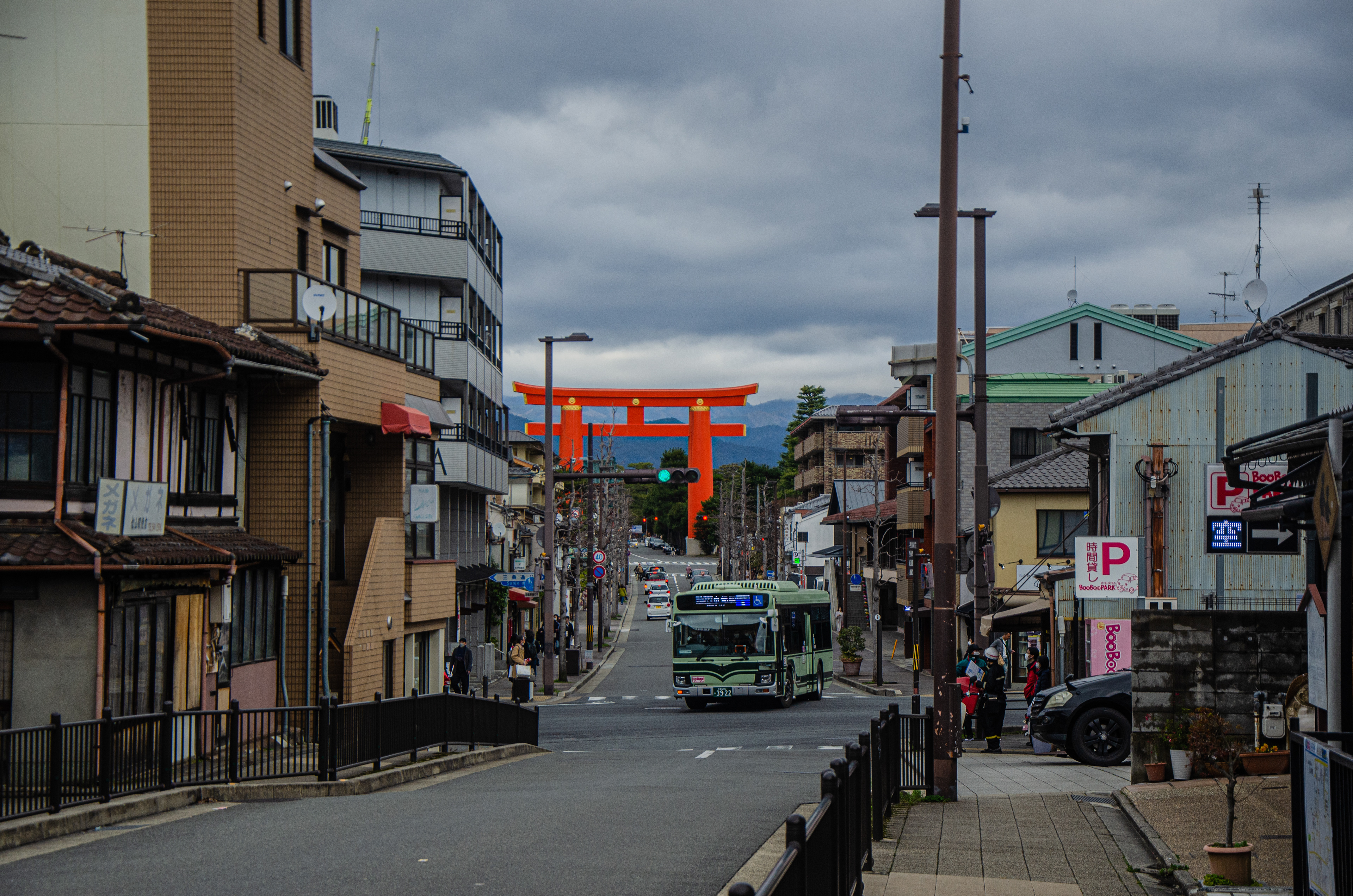
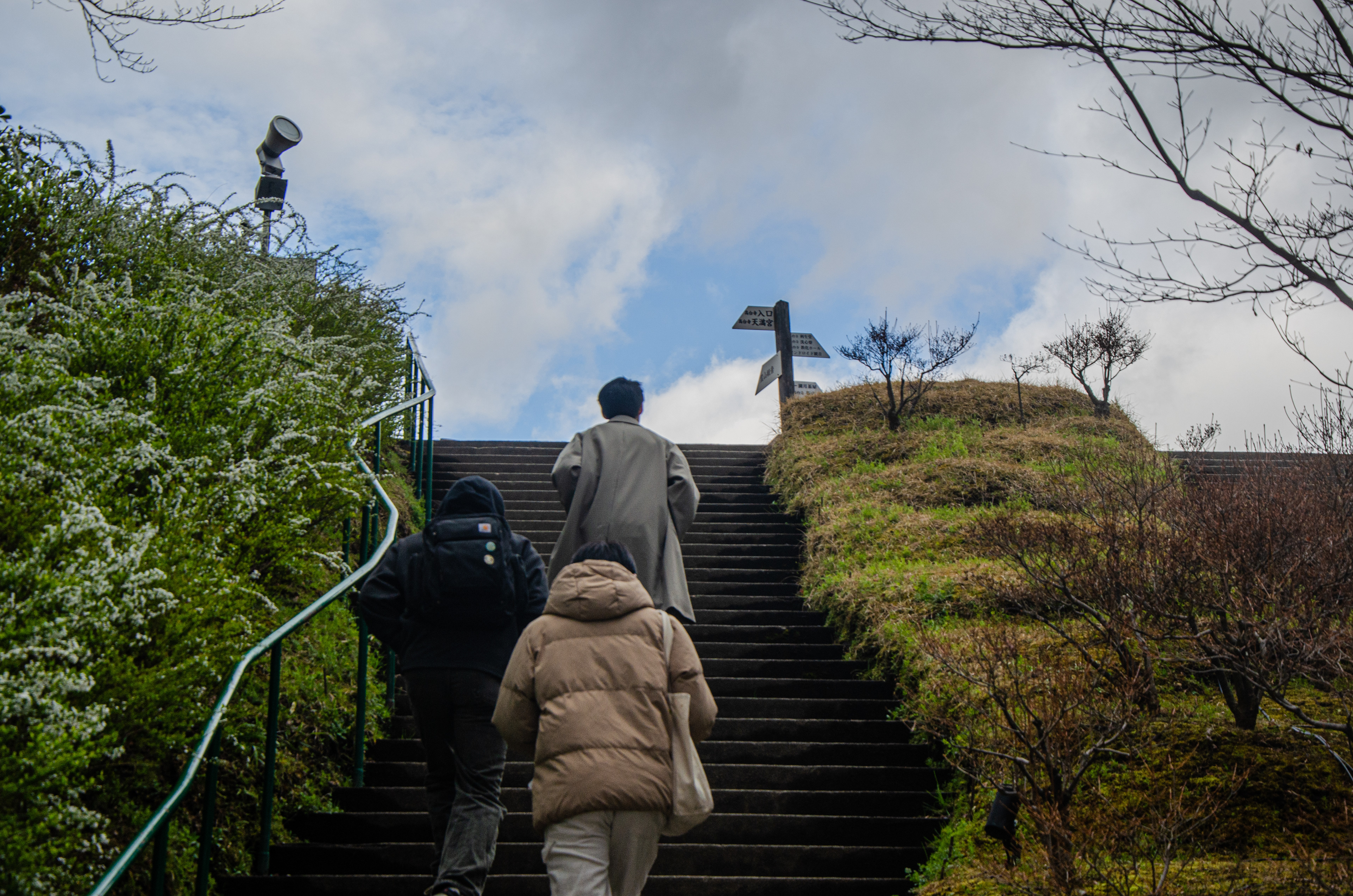





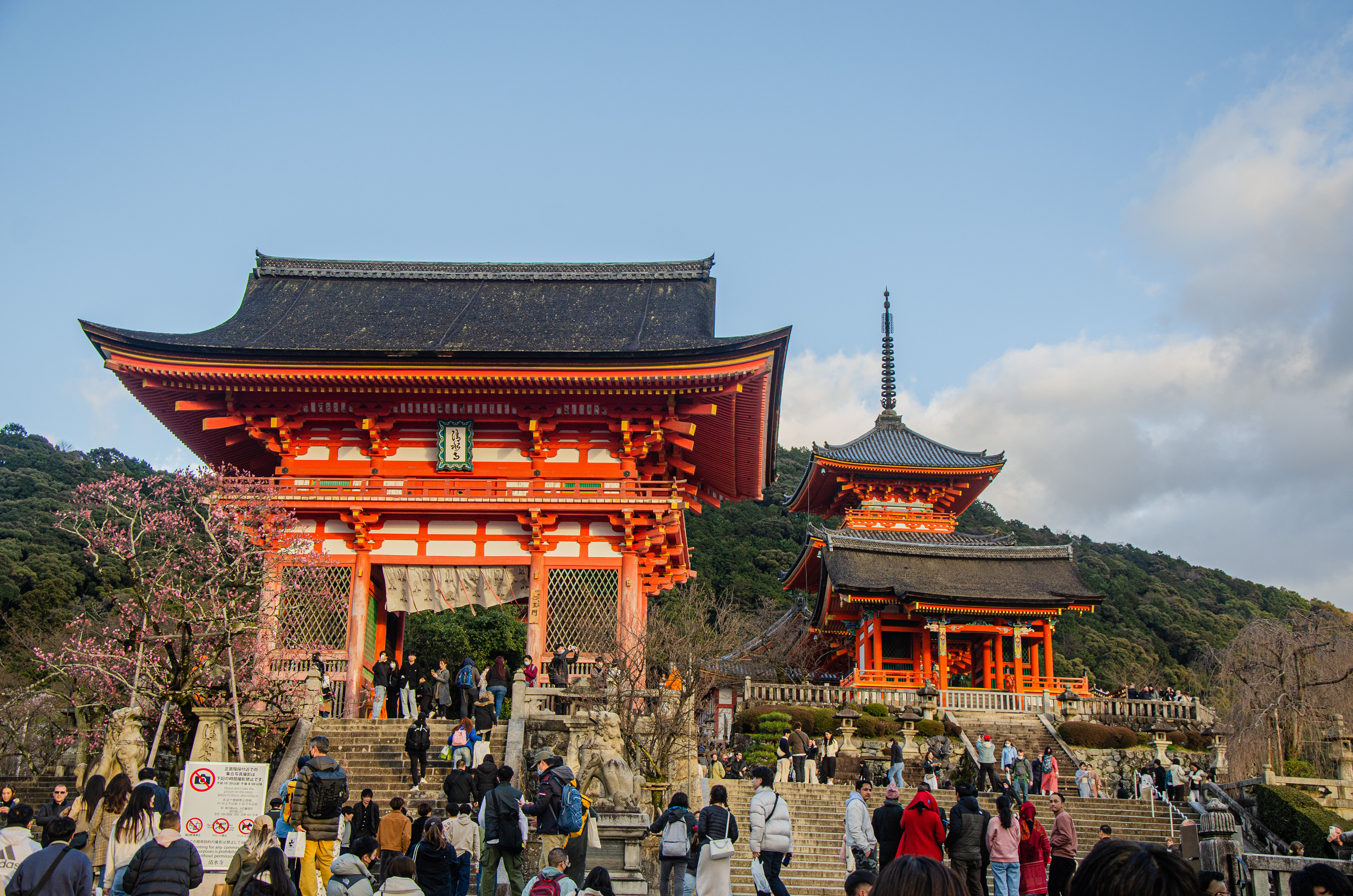
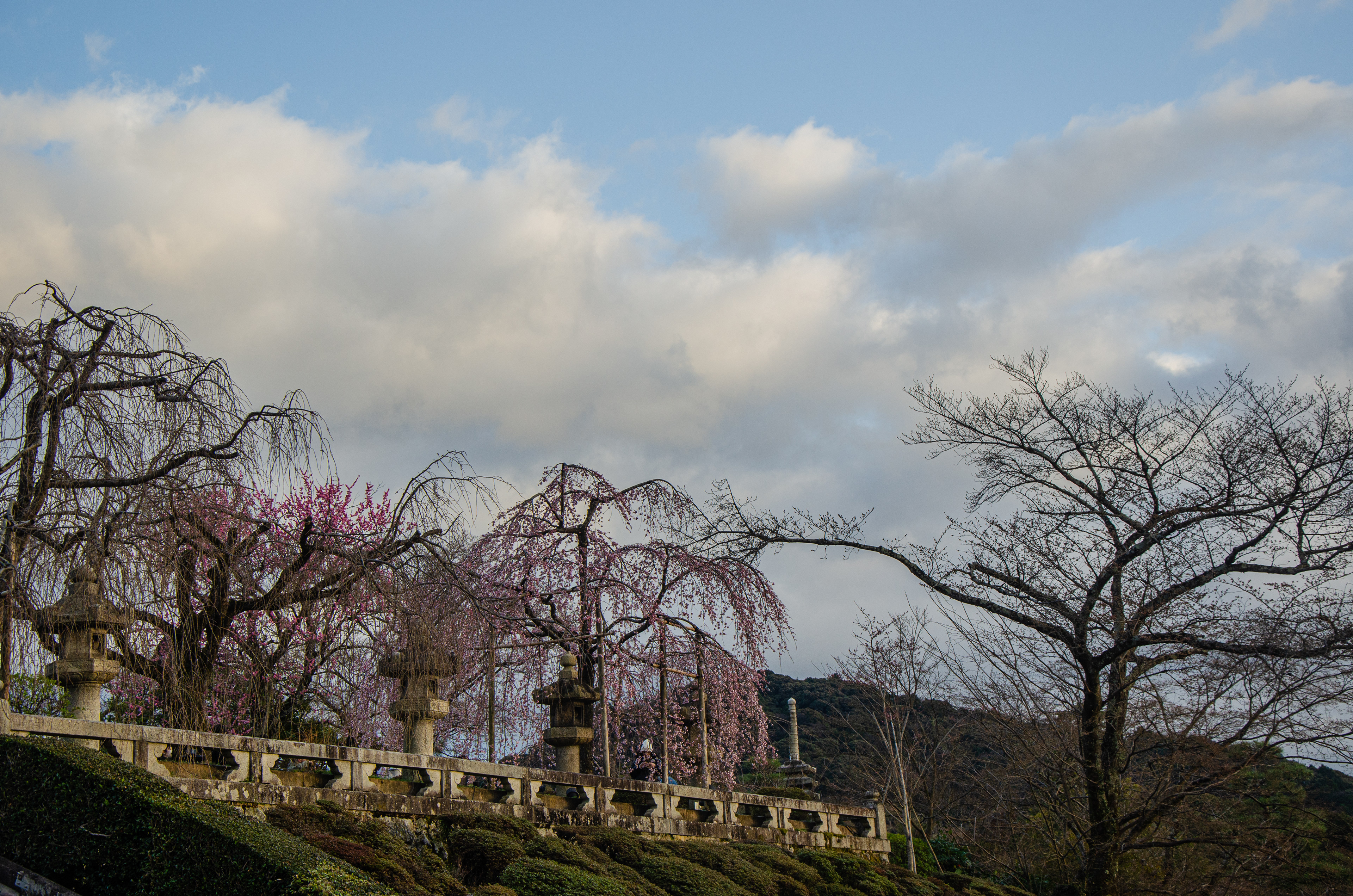
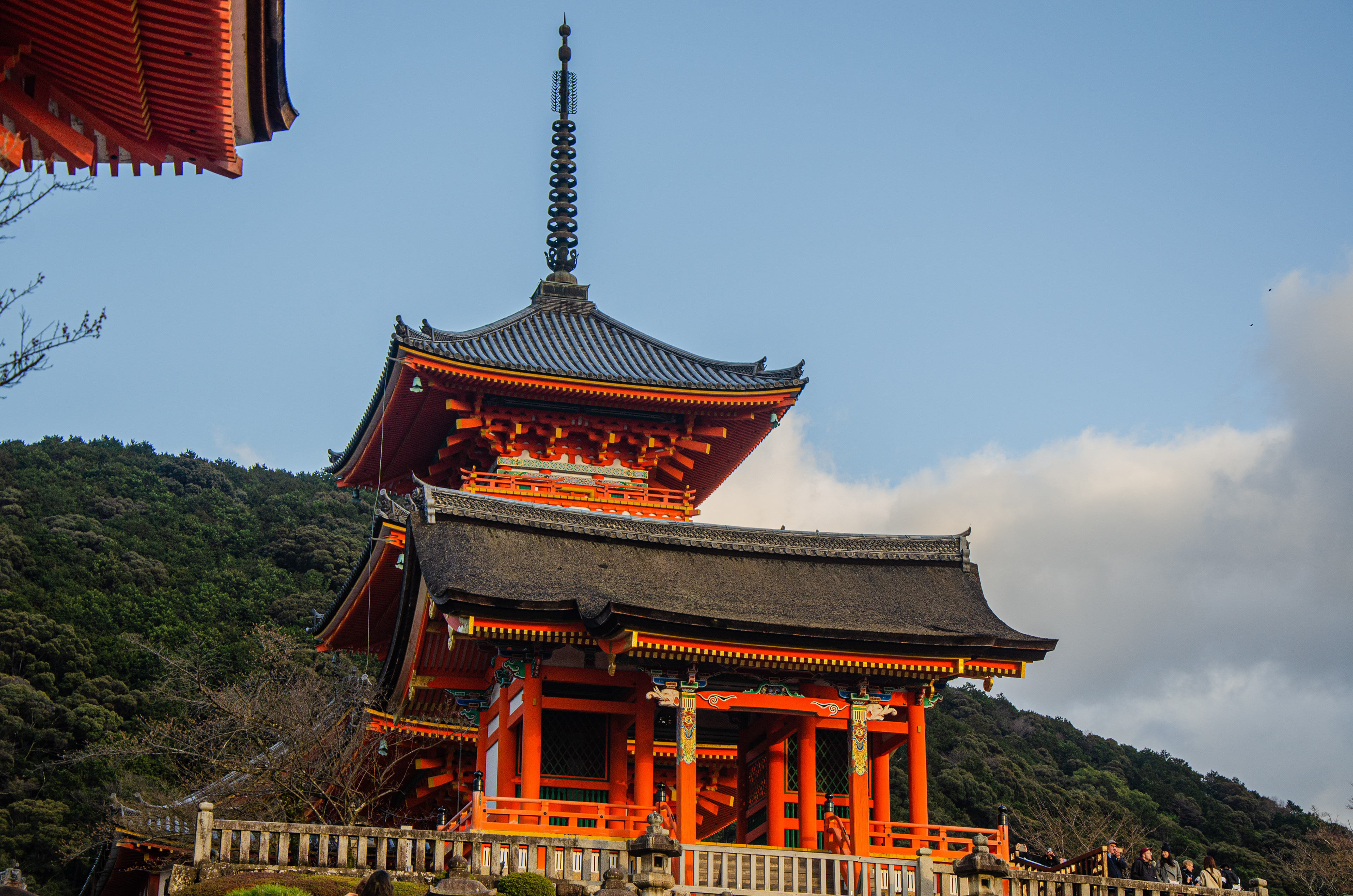

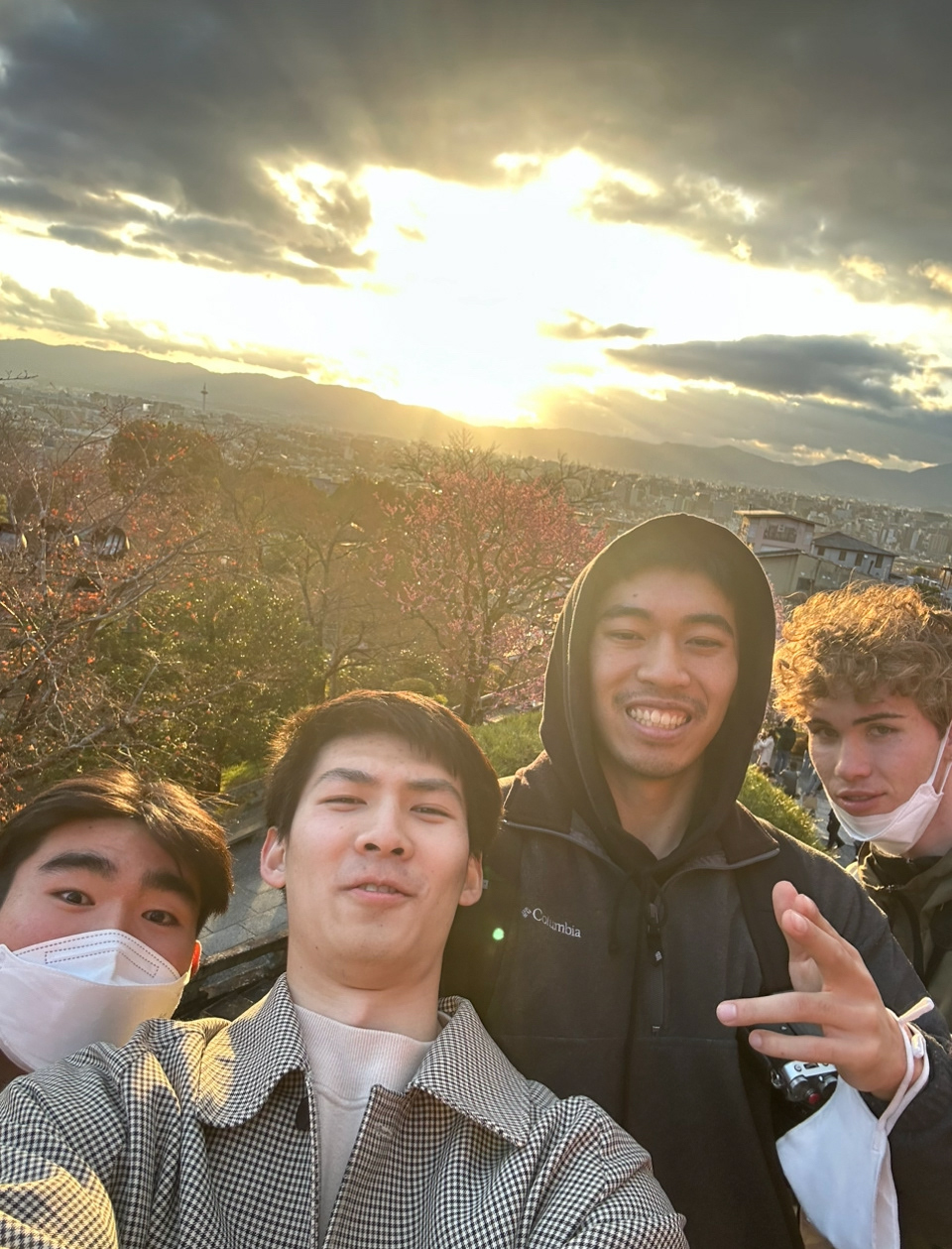
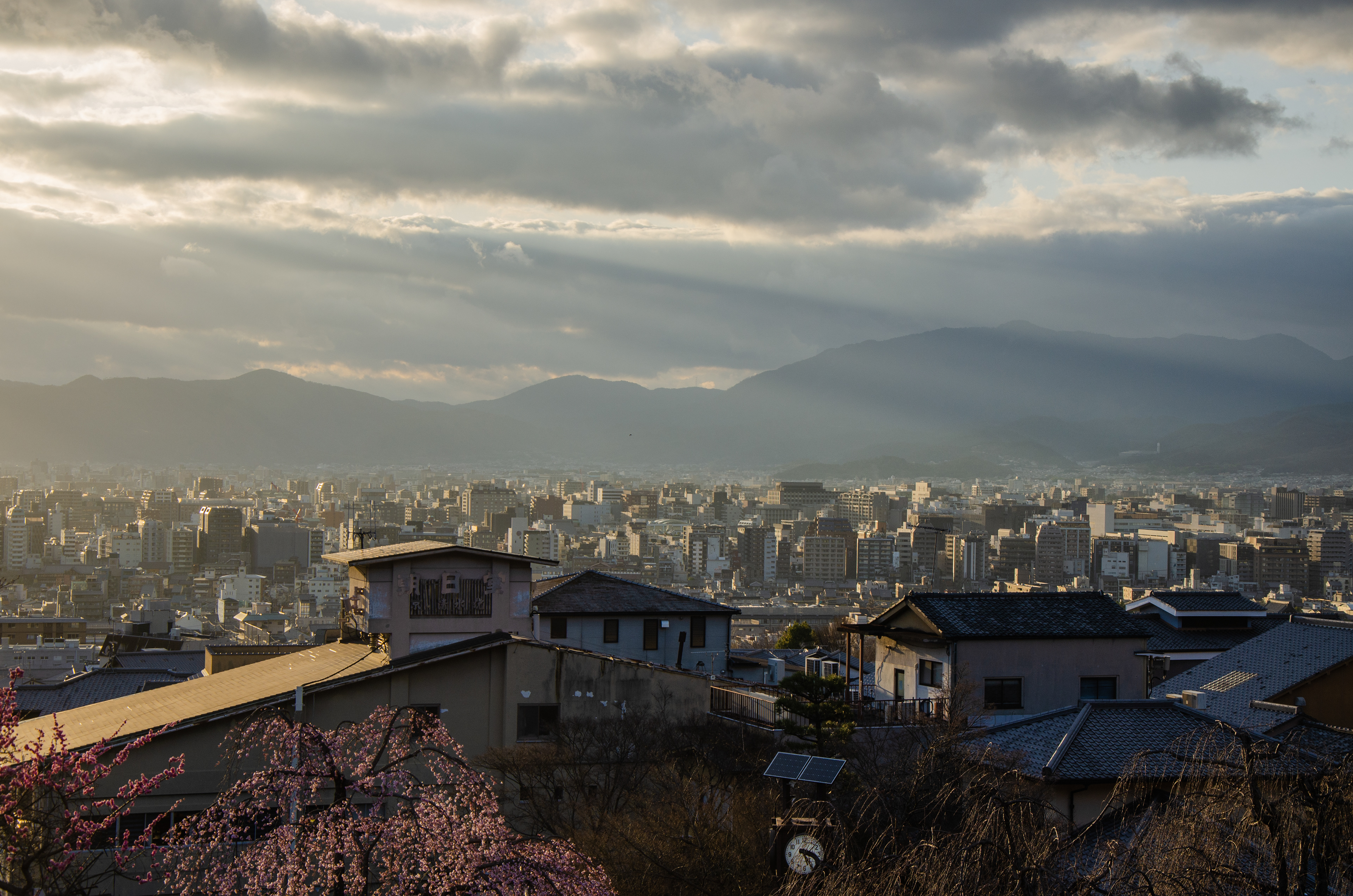
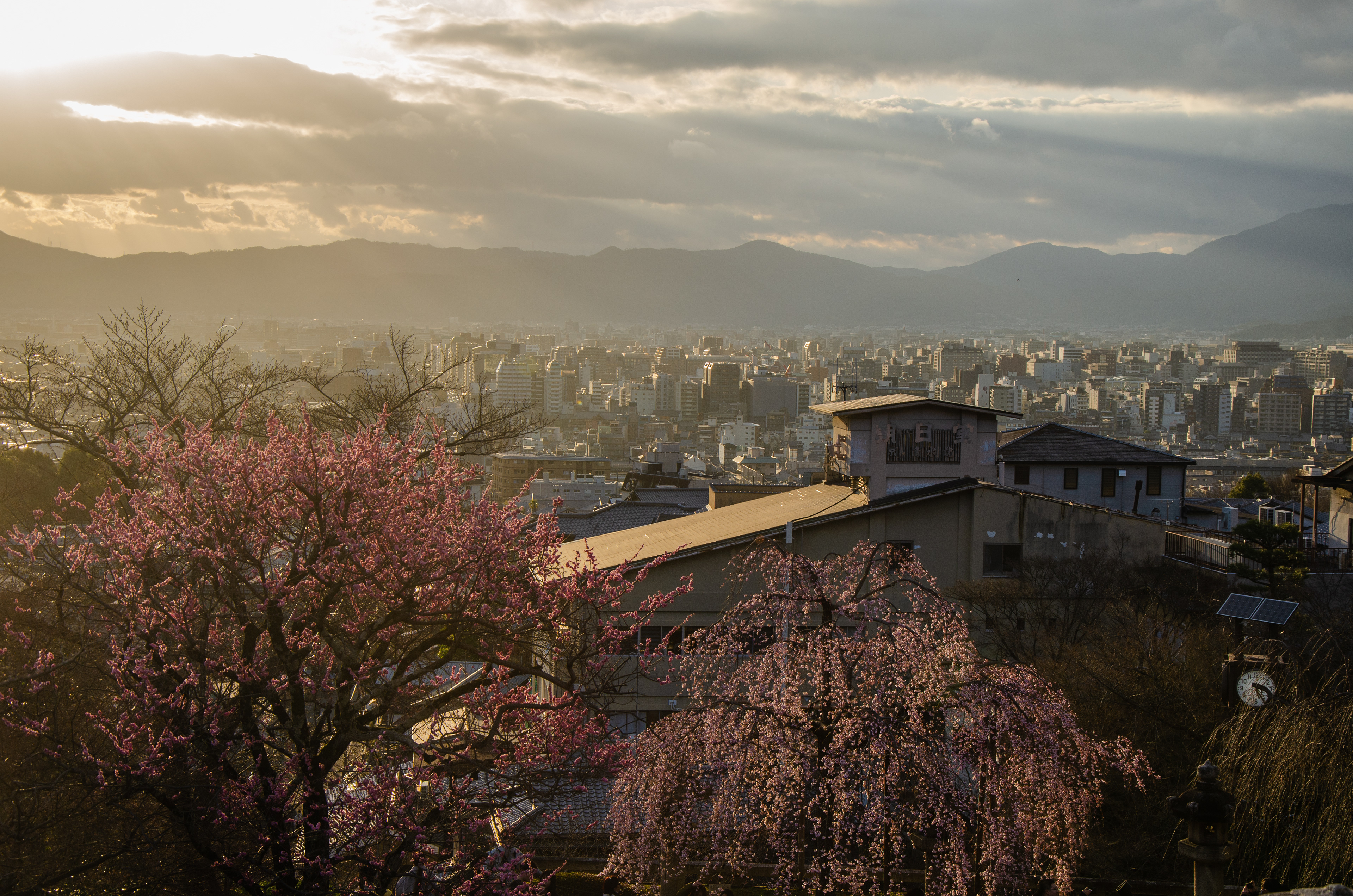
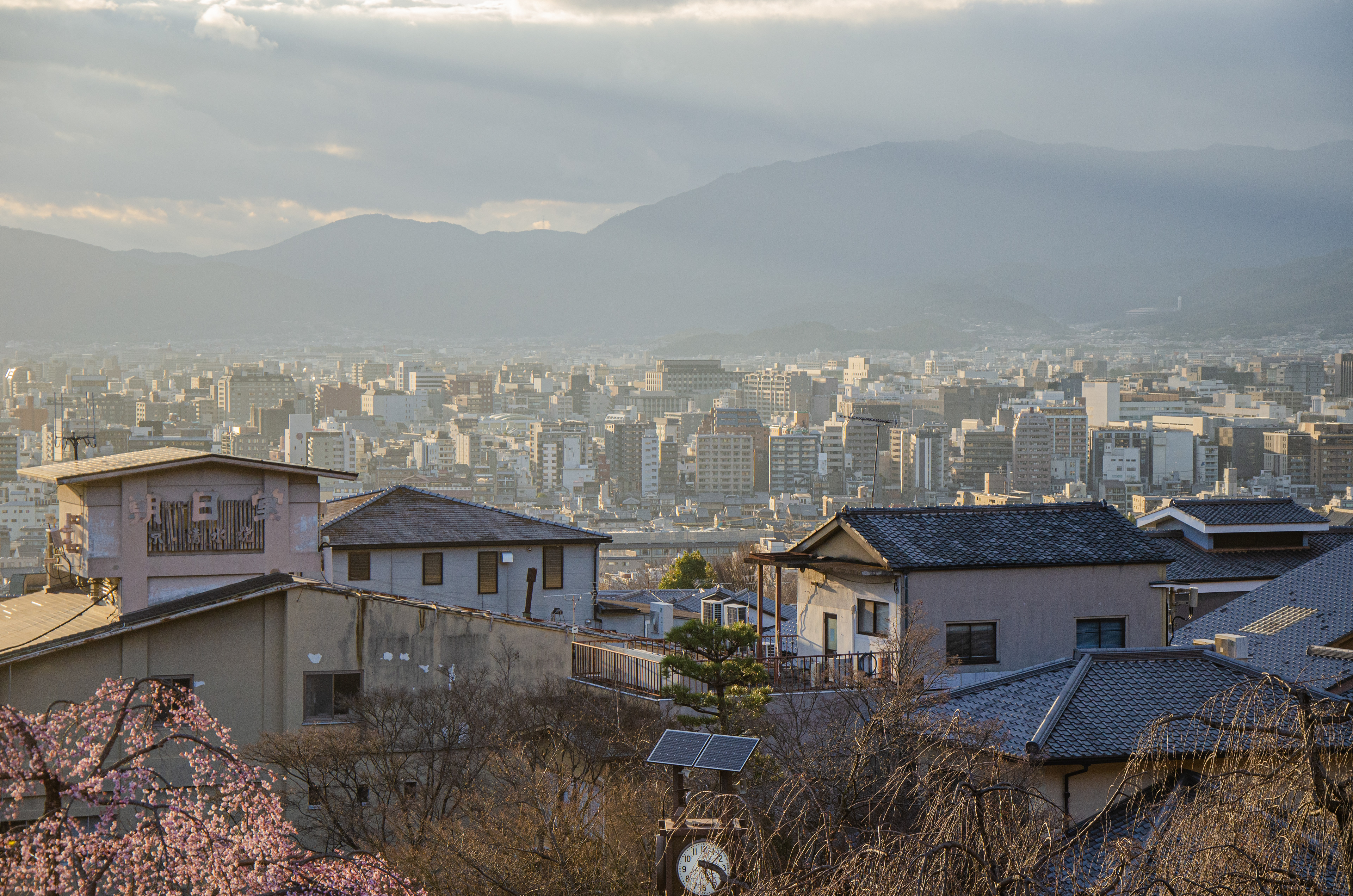
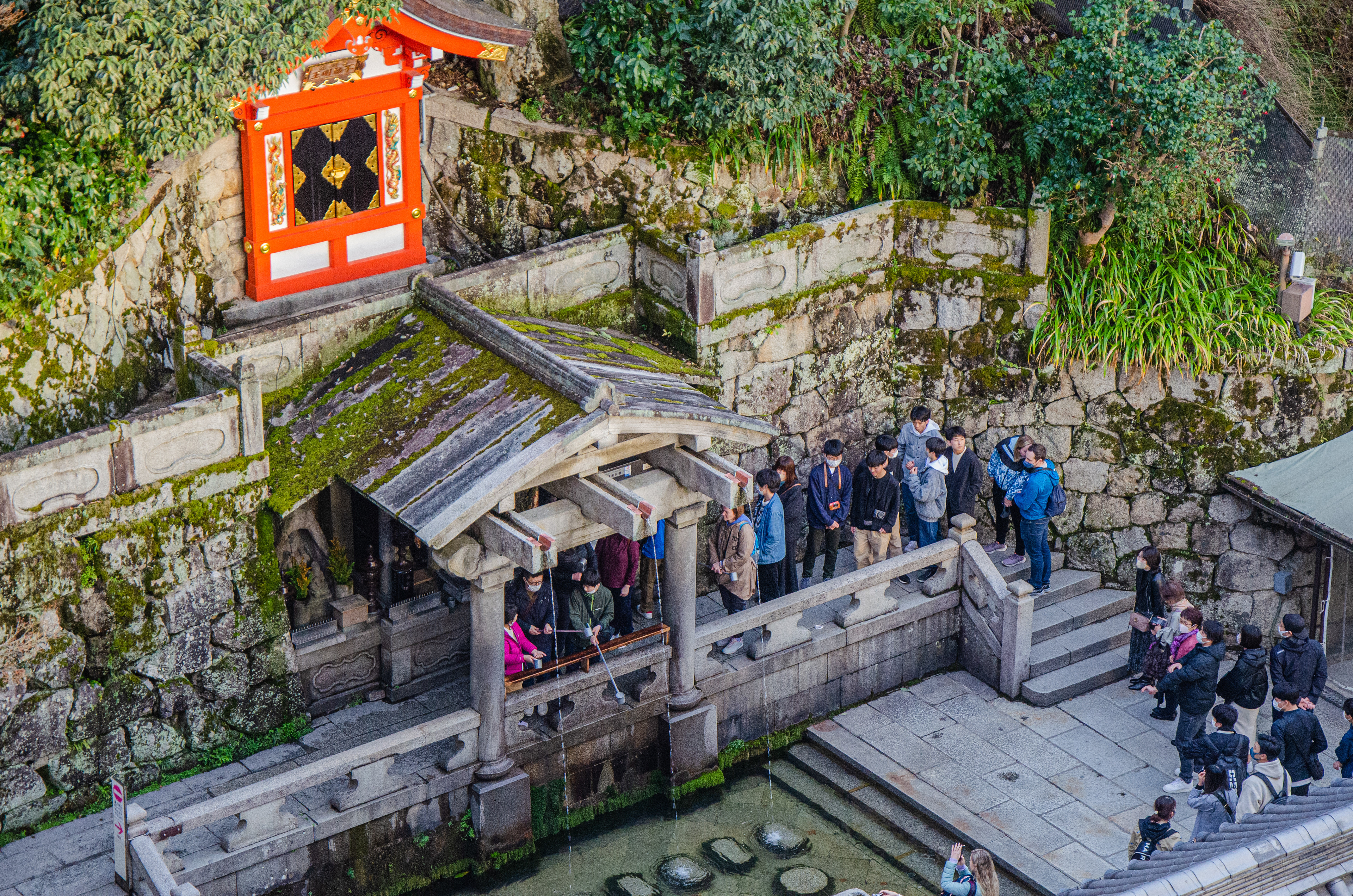

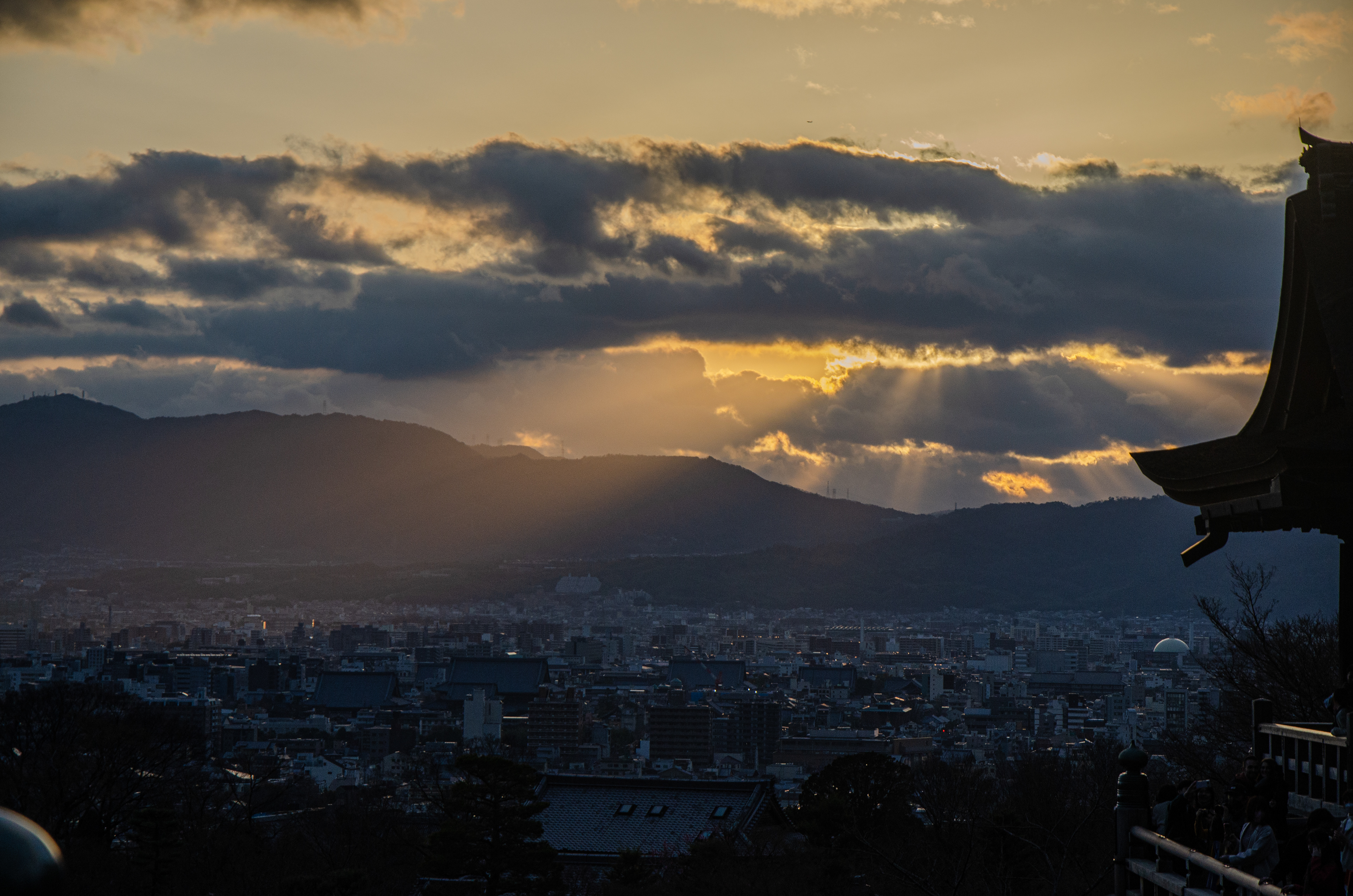
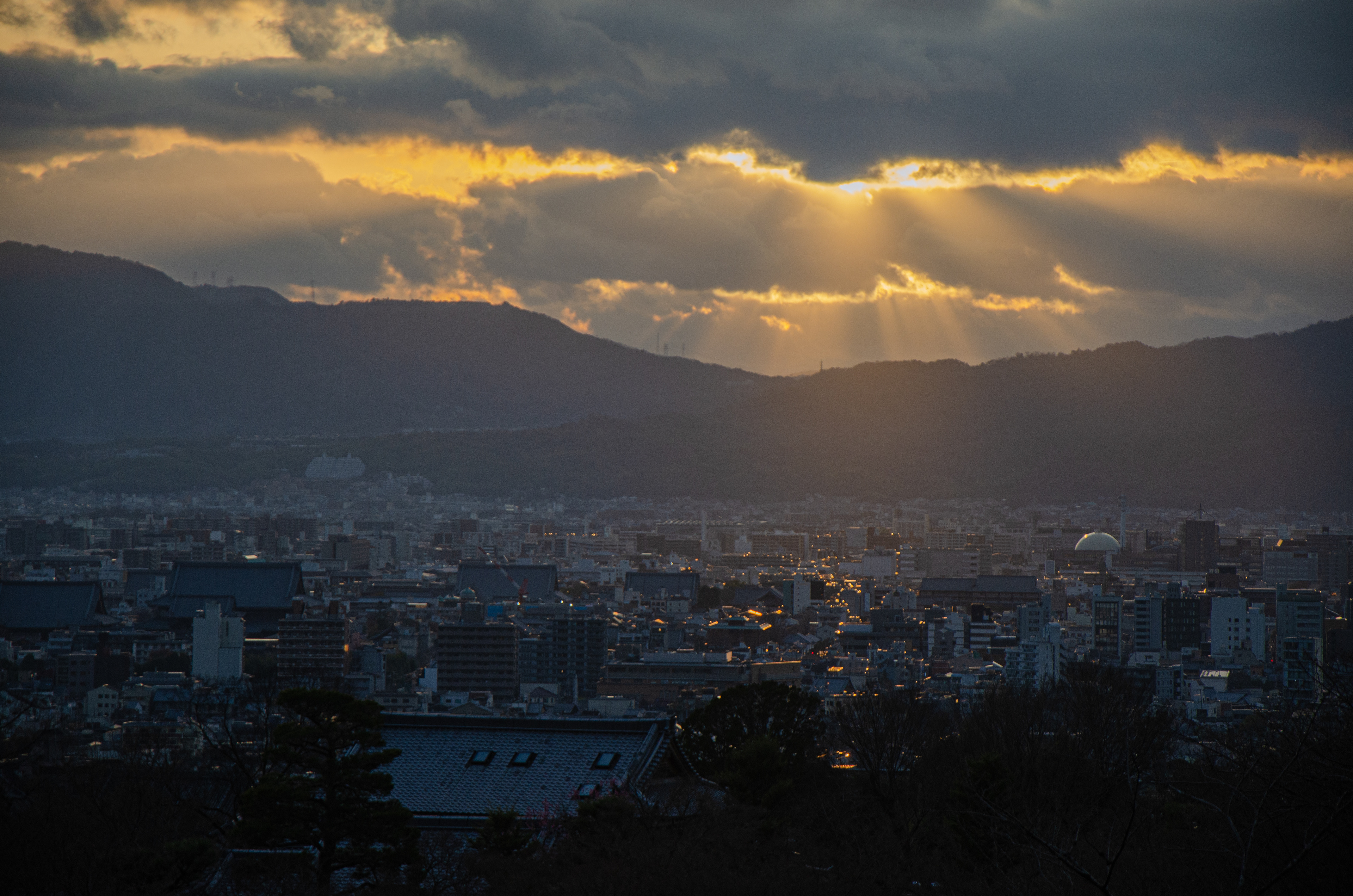
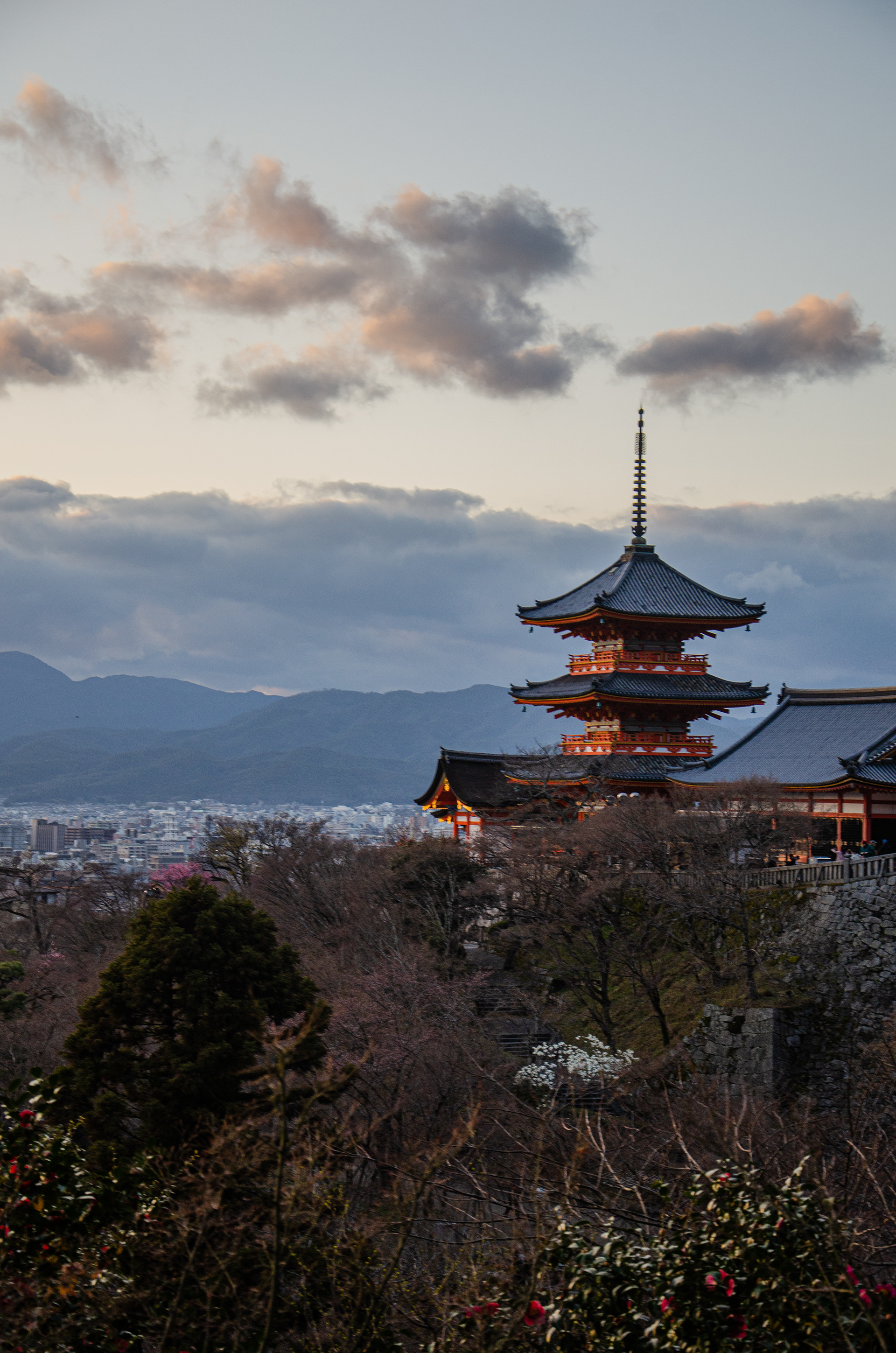
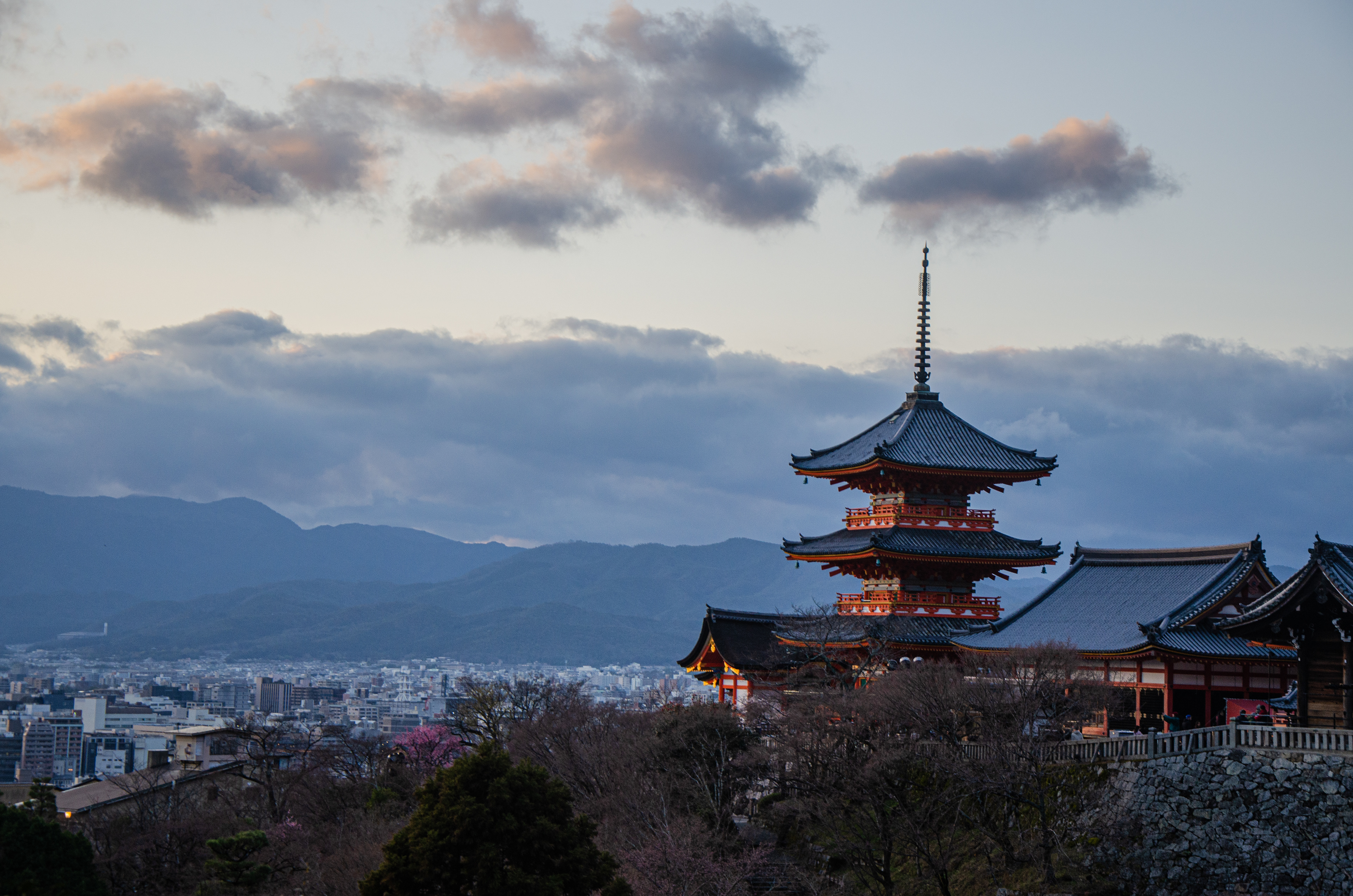
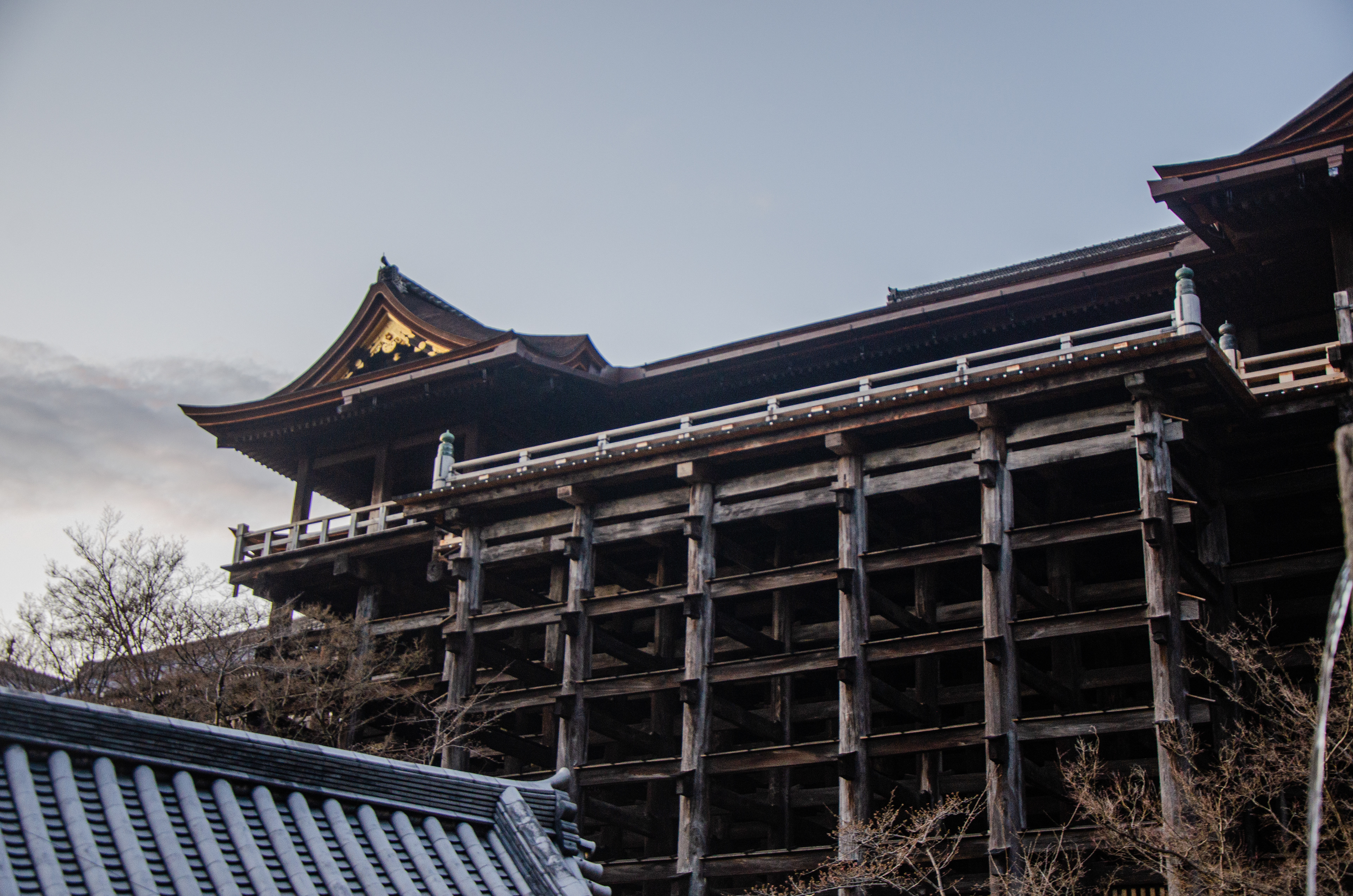
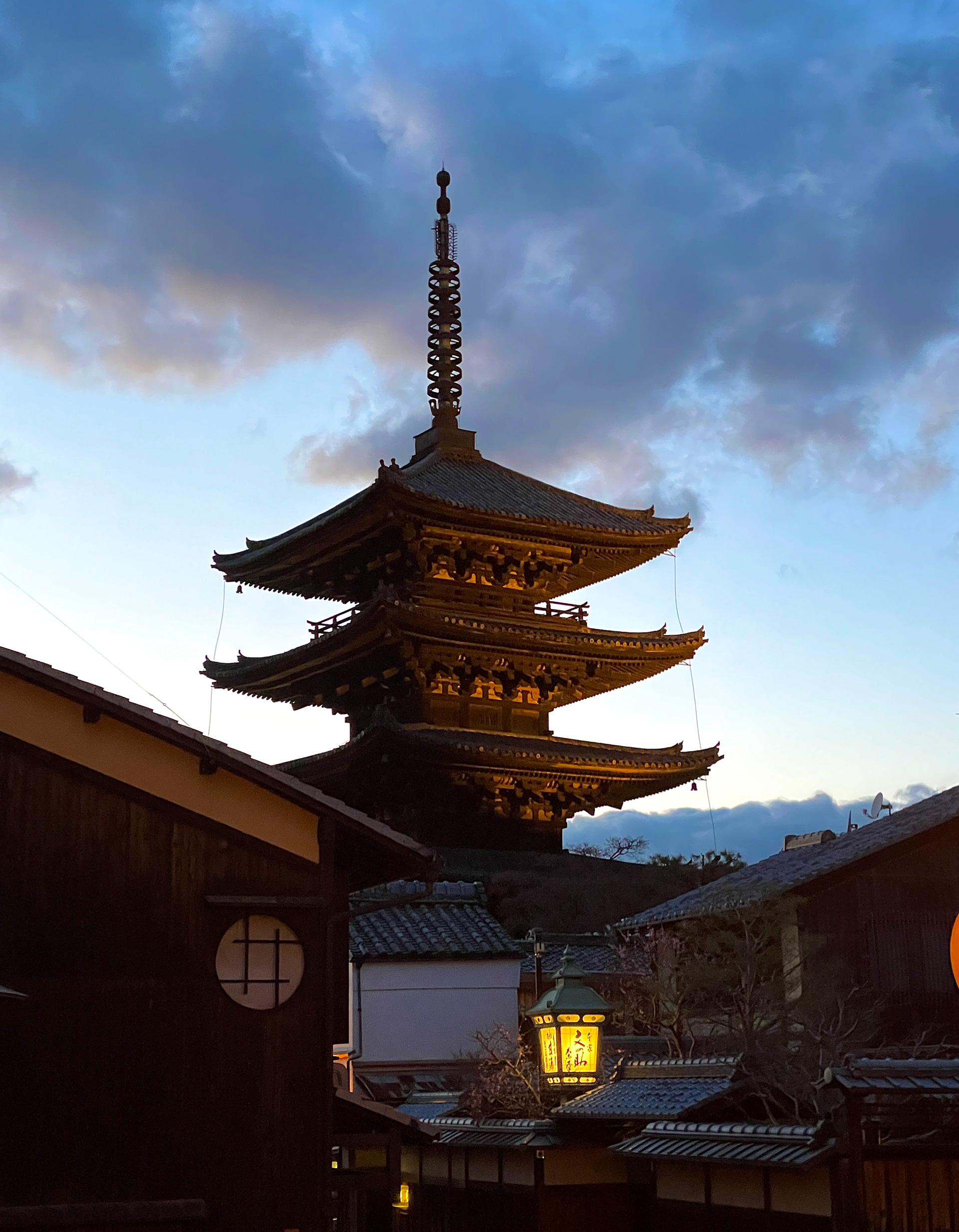








After waking up early to a foggy morning and riding the Shinkansen to Kyoto on Saturday morning, we used this day to tour some of the most famous temples in the area. The first brown one pictured is Ginkaku-Ji, or the silver pavilion. It was commissioned by the Shogun Ashikaga Yoshimasa as a retirement villa, who was inspired by his grandfather's Kinkaku-Ji (The Golden Pavilion) which will be shown shortly. It was meant to be painted silver, but Yoshimasa died before it could be, so it remains raw wood. We then stopped at a small shrine which had bunny statues because it is currently the year of the rabbit. FYI, the difference between temples and shrines is that temples are Buddhist, and shrines are Shinto. Because the Japanese Emperor's religion is currently Shinto, shrines are free to enter as they are subsidized by the government, but temples require a fee for entry so that they can be kept up (300-600 yen). Next, we made a stop at Heian-Jingu Shrine, which might be my favorite looking shrine/temple I've seen yet. There was a university graduation going on when we got there, and there was a mass of students in kimonos and suits taking pictures and celebrating. After refueling with some matcha and walking through this giant Torii gate, we began the ascension to the famous Kiyomizu-Dera Temple. On the way we tried to see another huge statue, but it had closed again like the buddha at Kamakura, and I got a picture through the door again. We got to Kiyomizu-Dera at just the right time of day, and the lighting looked amazing on the bright orange paint of the temple, as well as on the city below. That night, we hung out at an izakaya before turning in to our airbnb, with tatami mats as flooring.


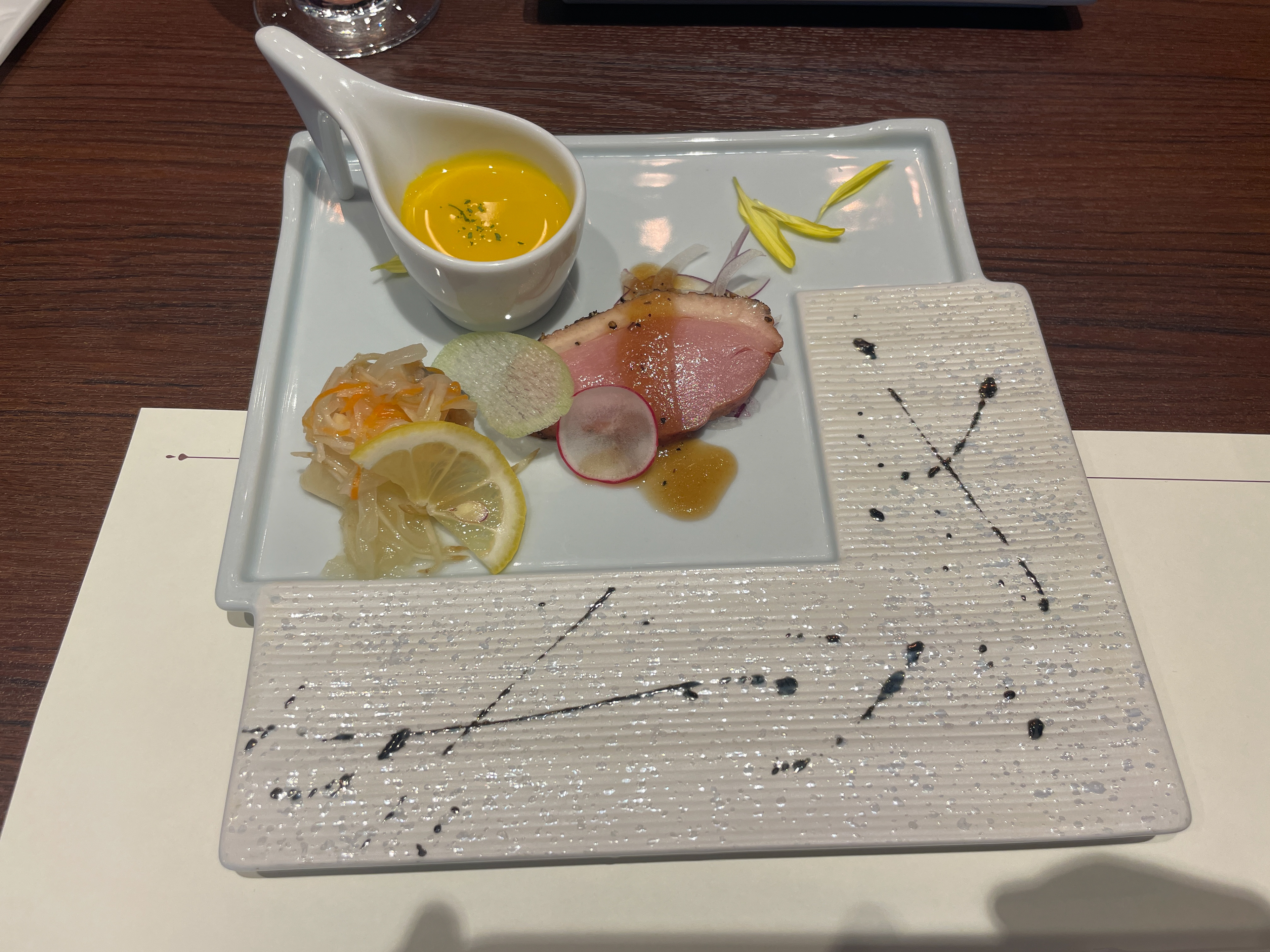
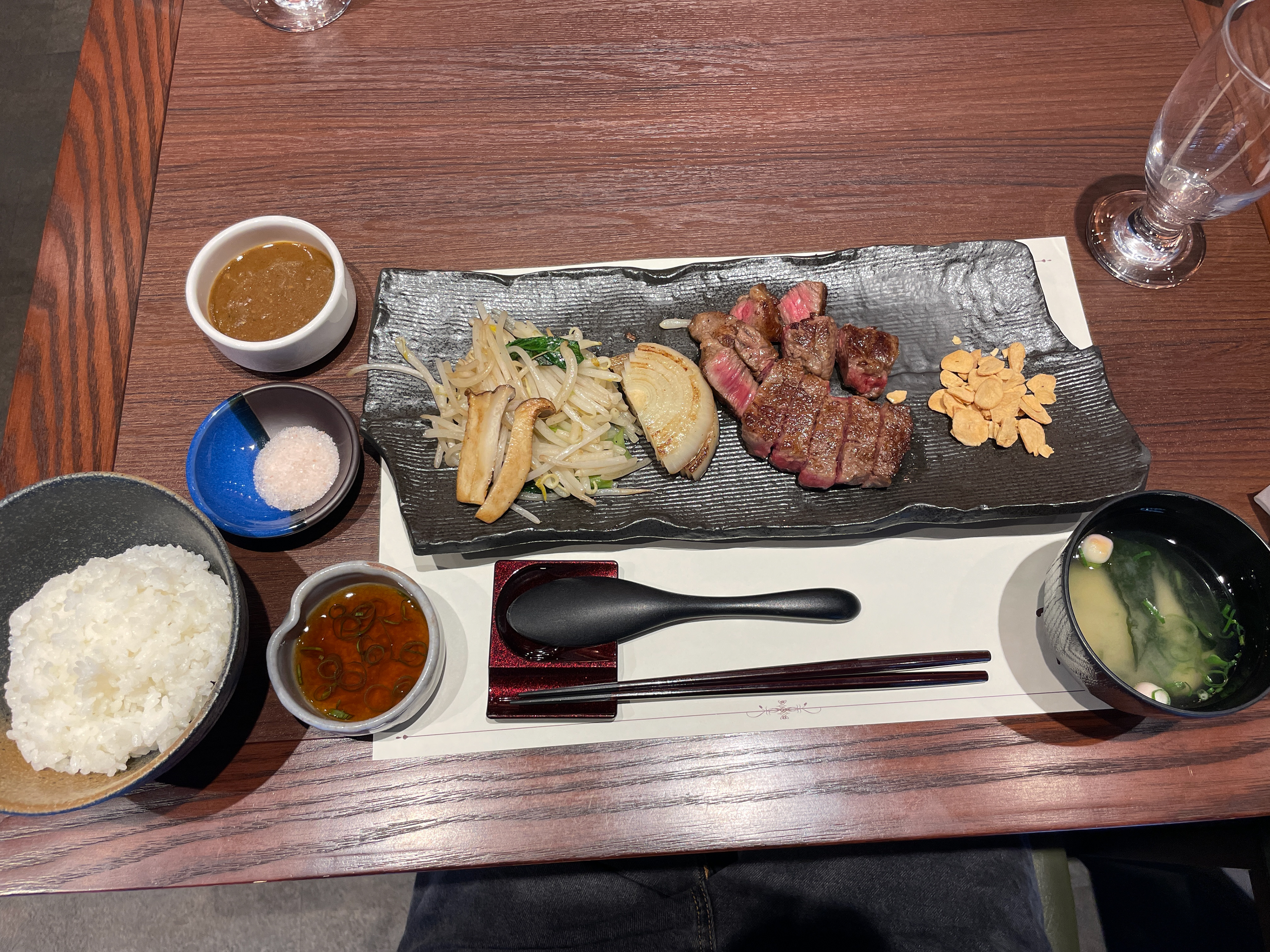



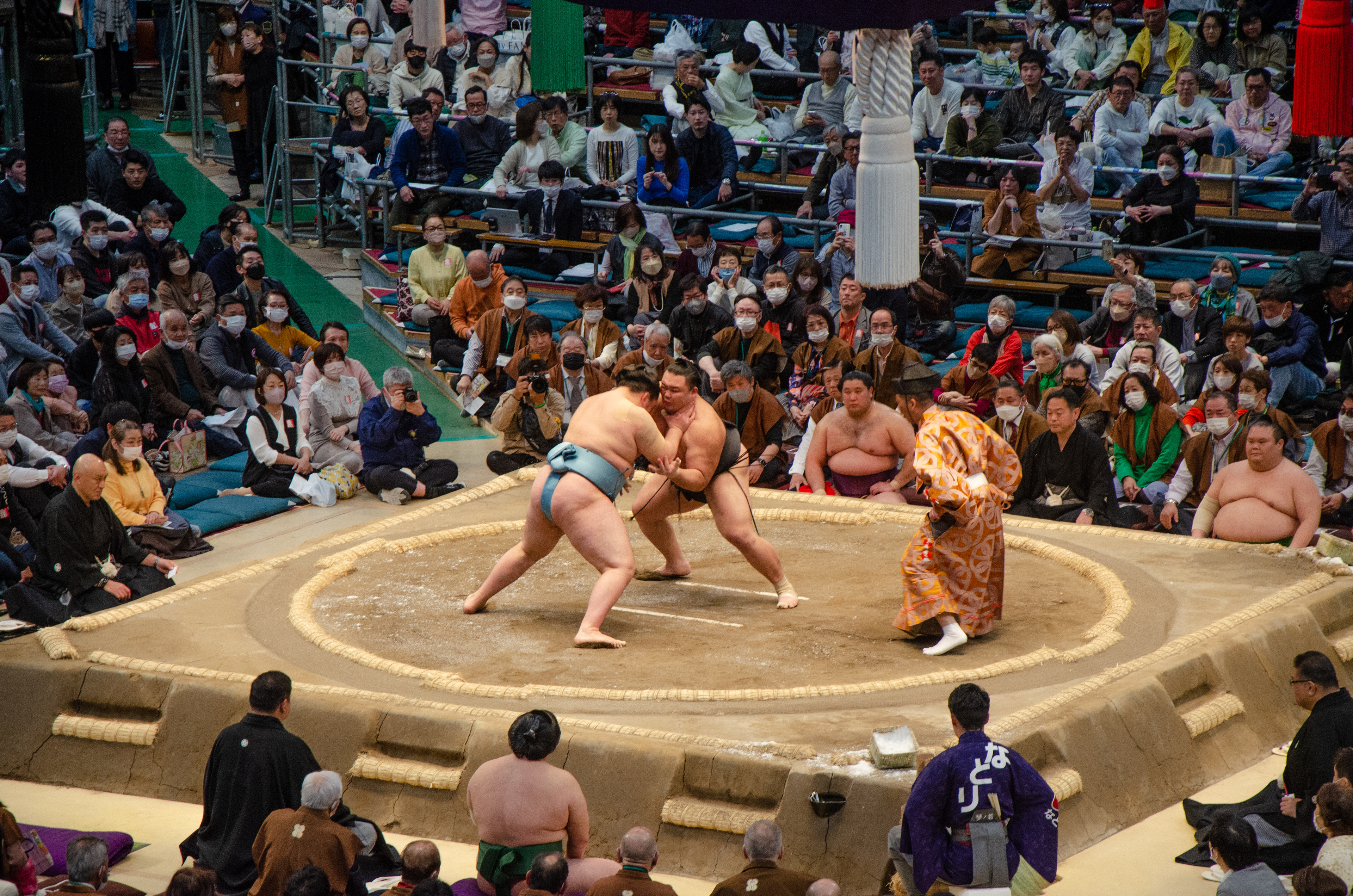

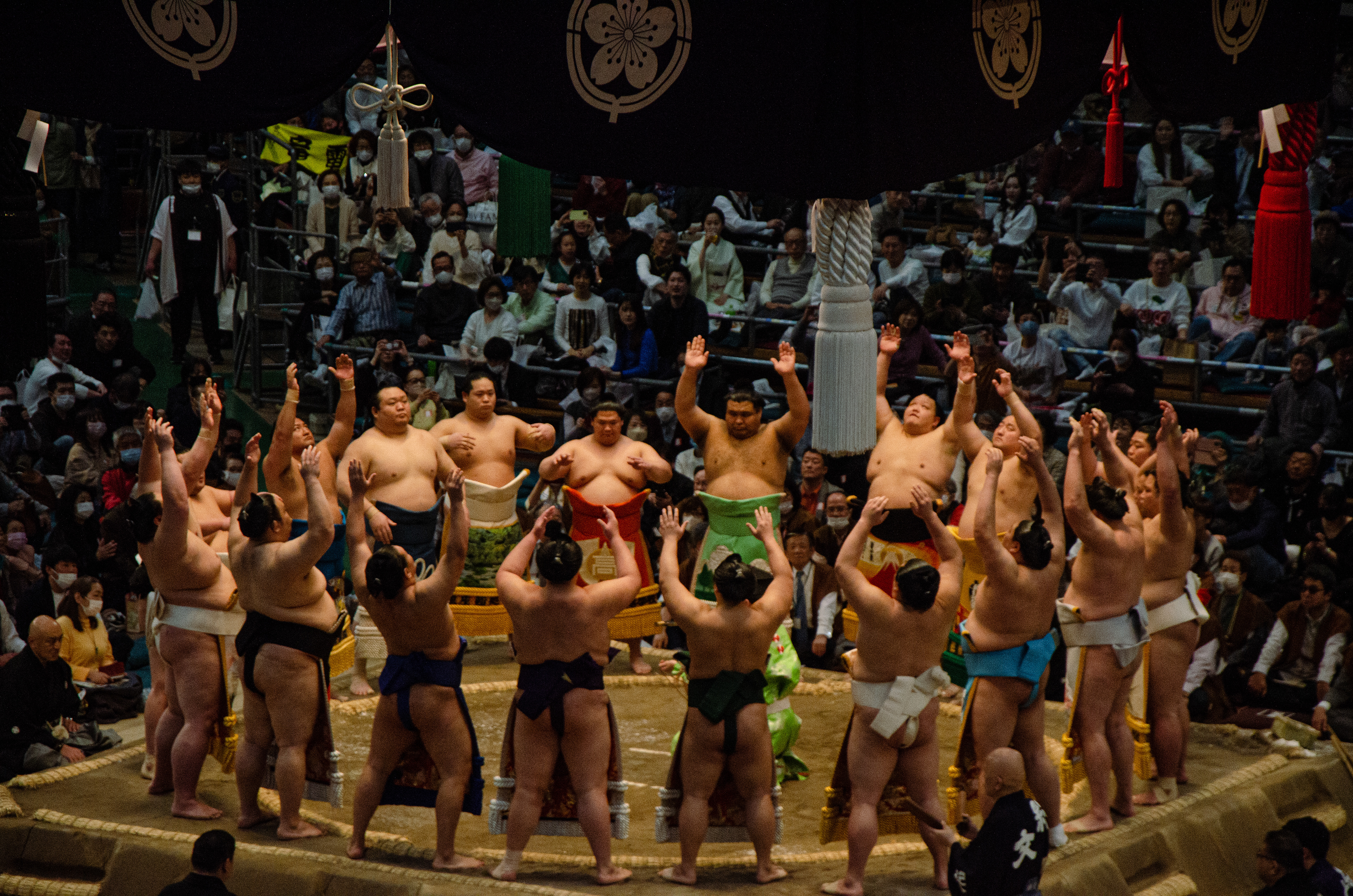
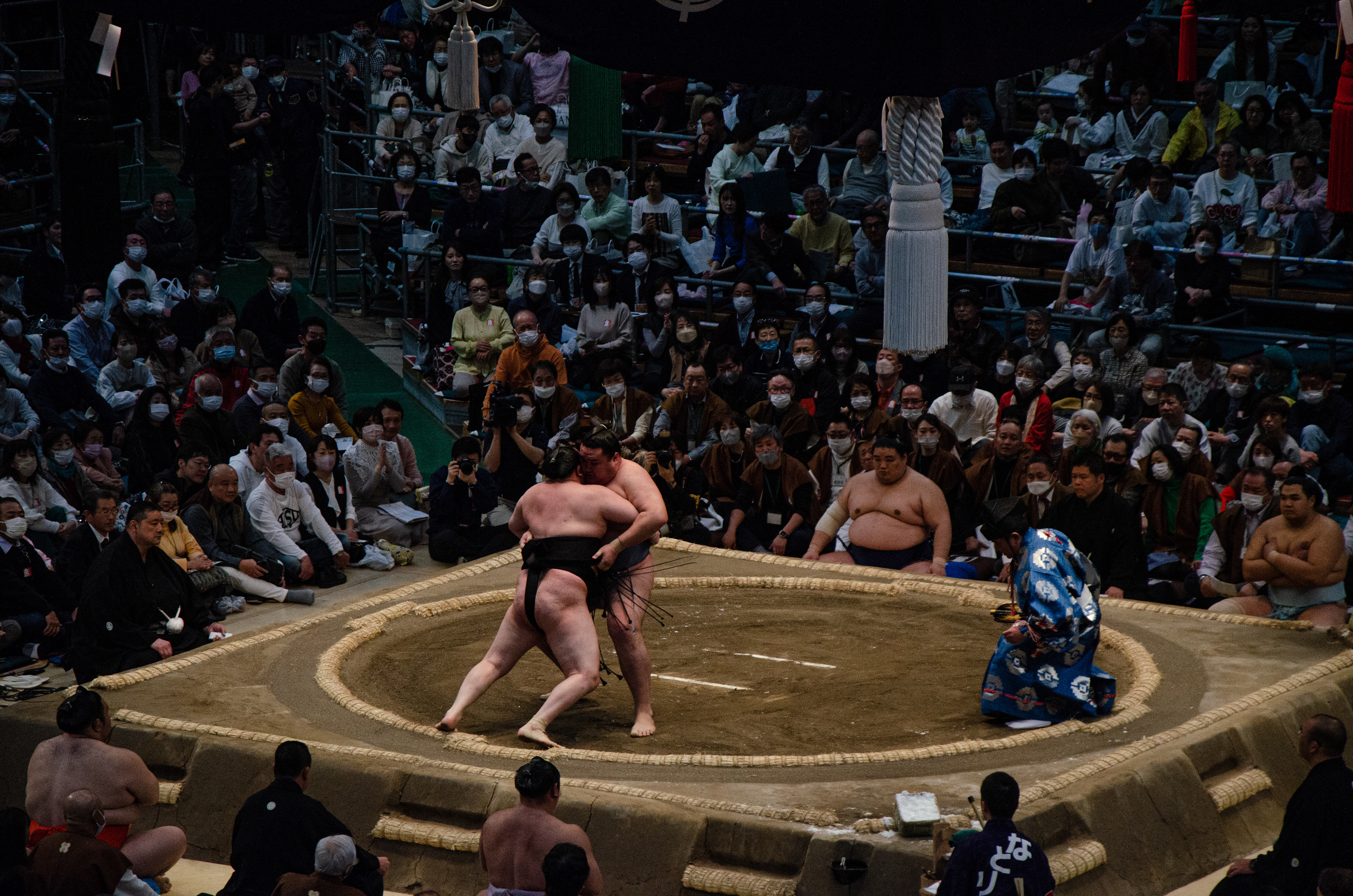
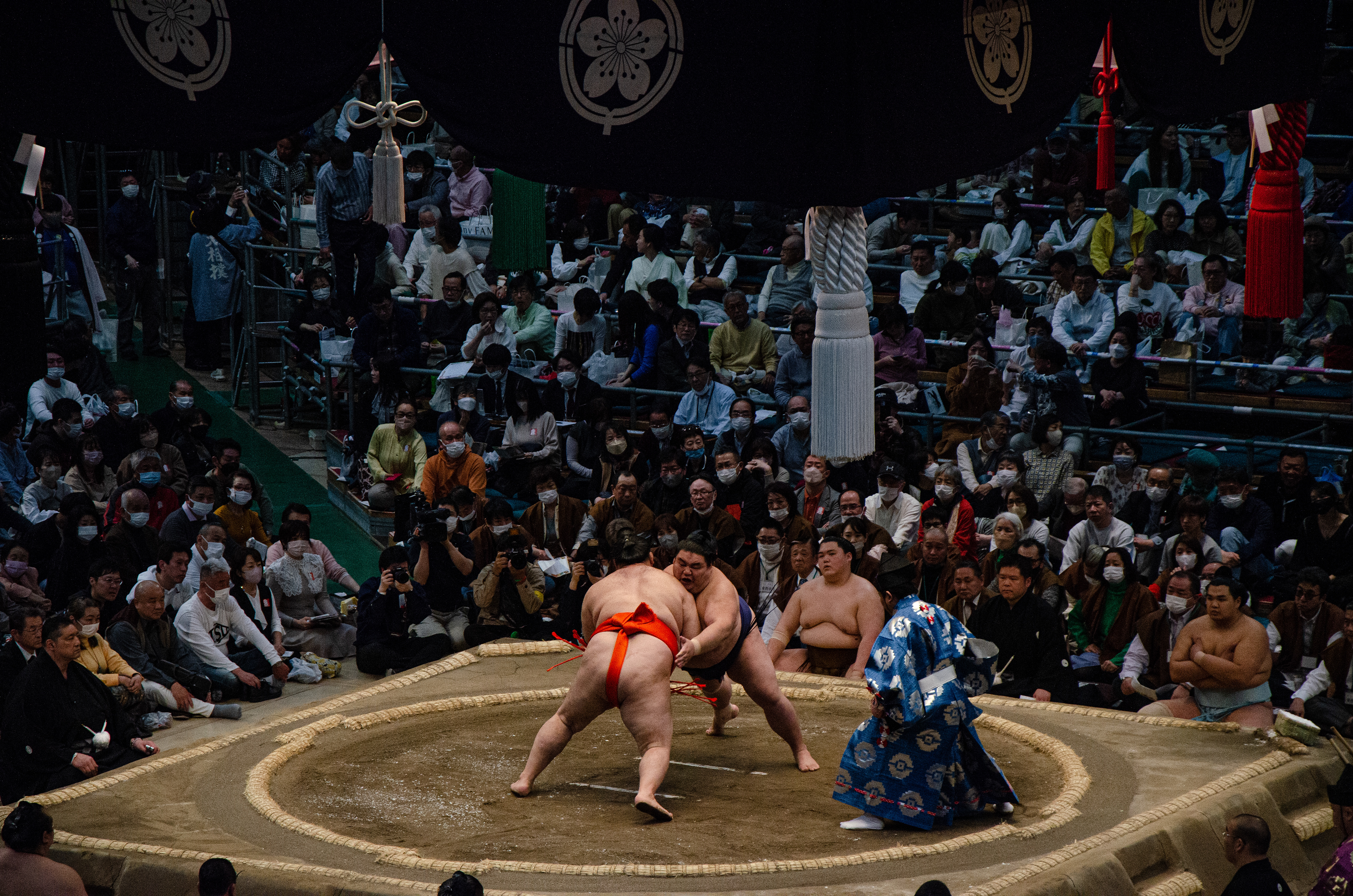
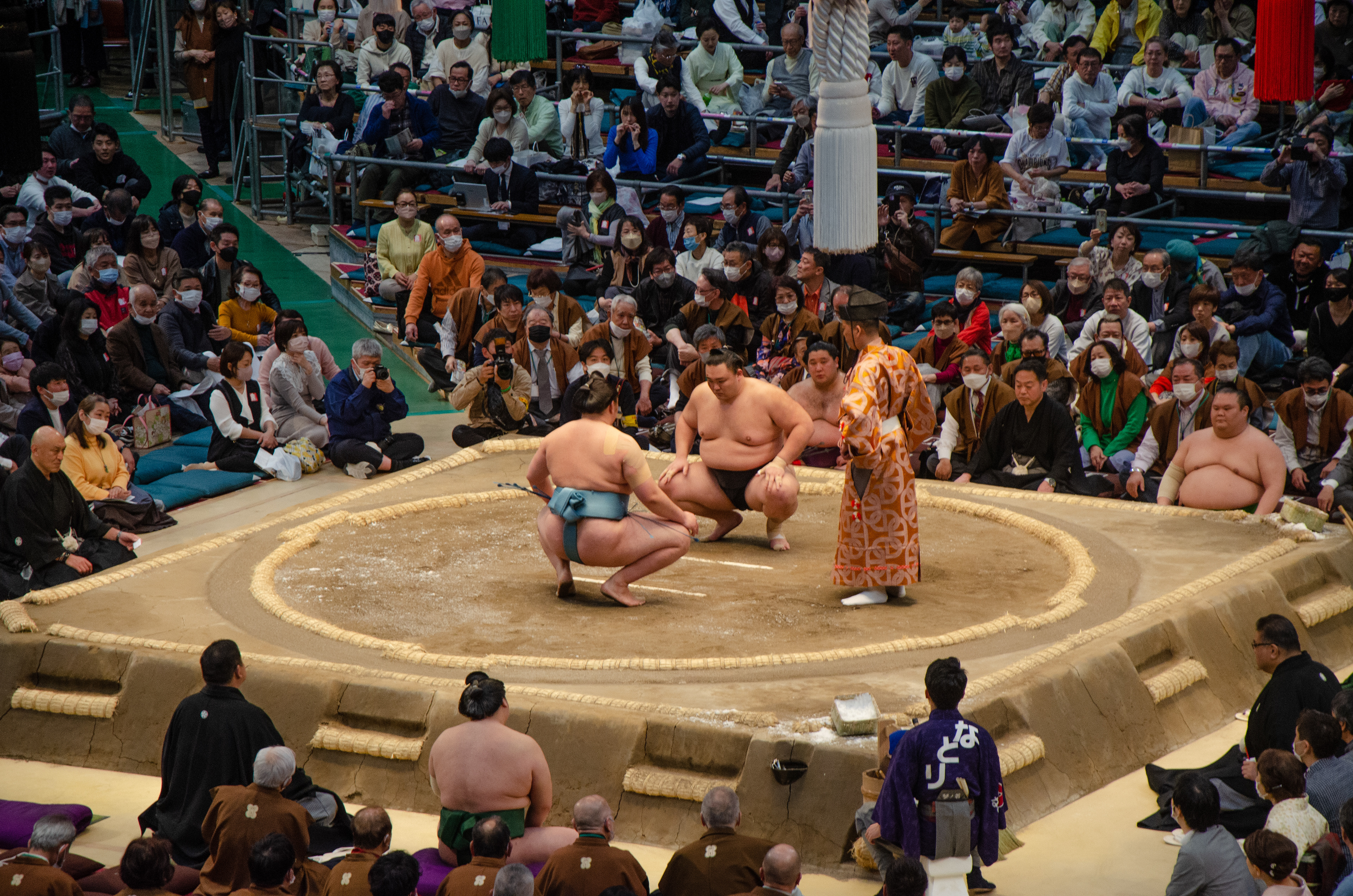
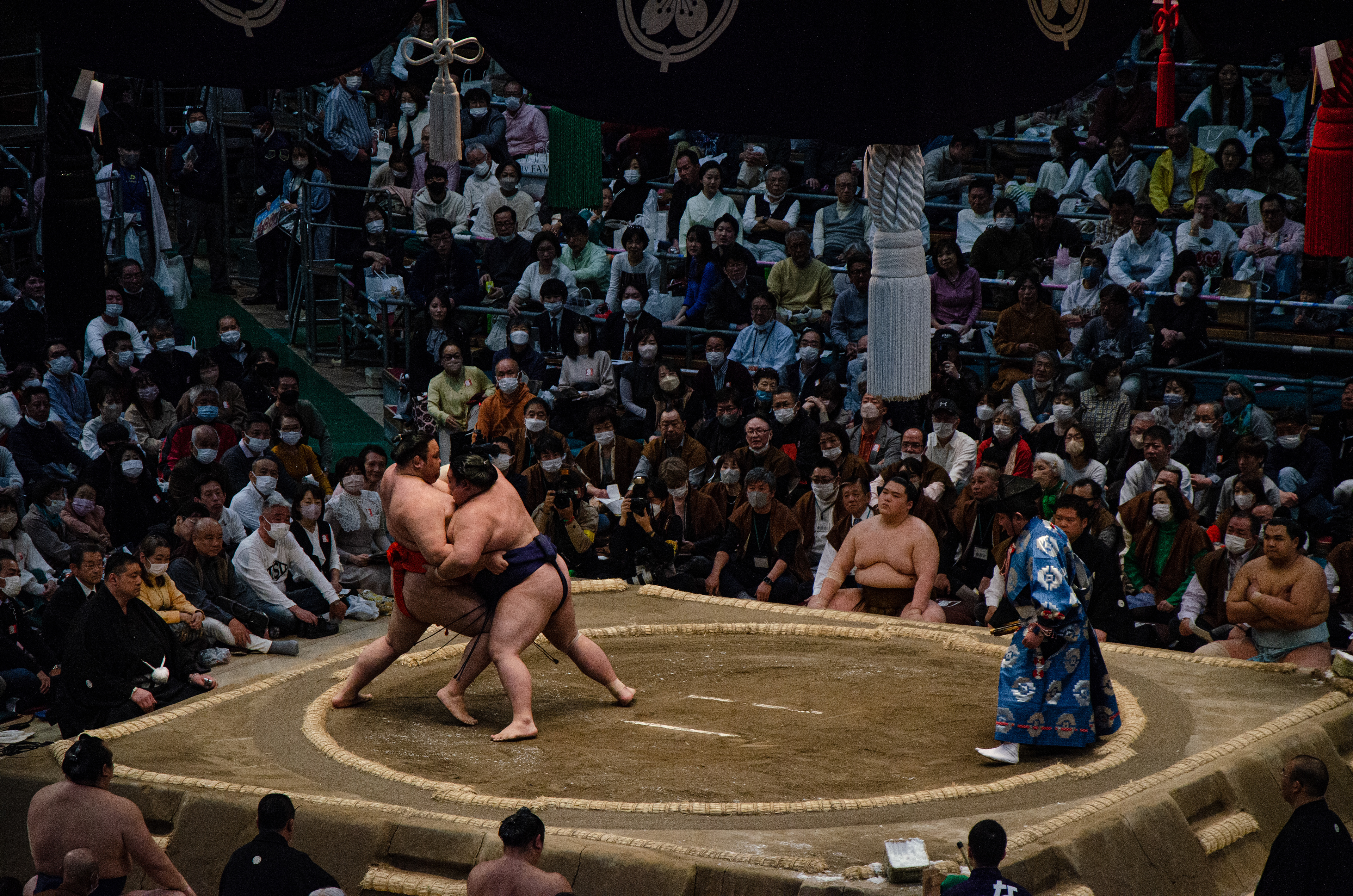
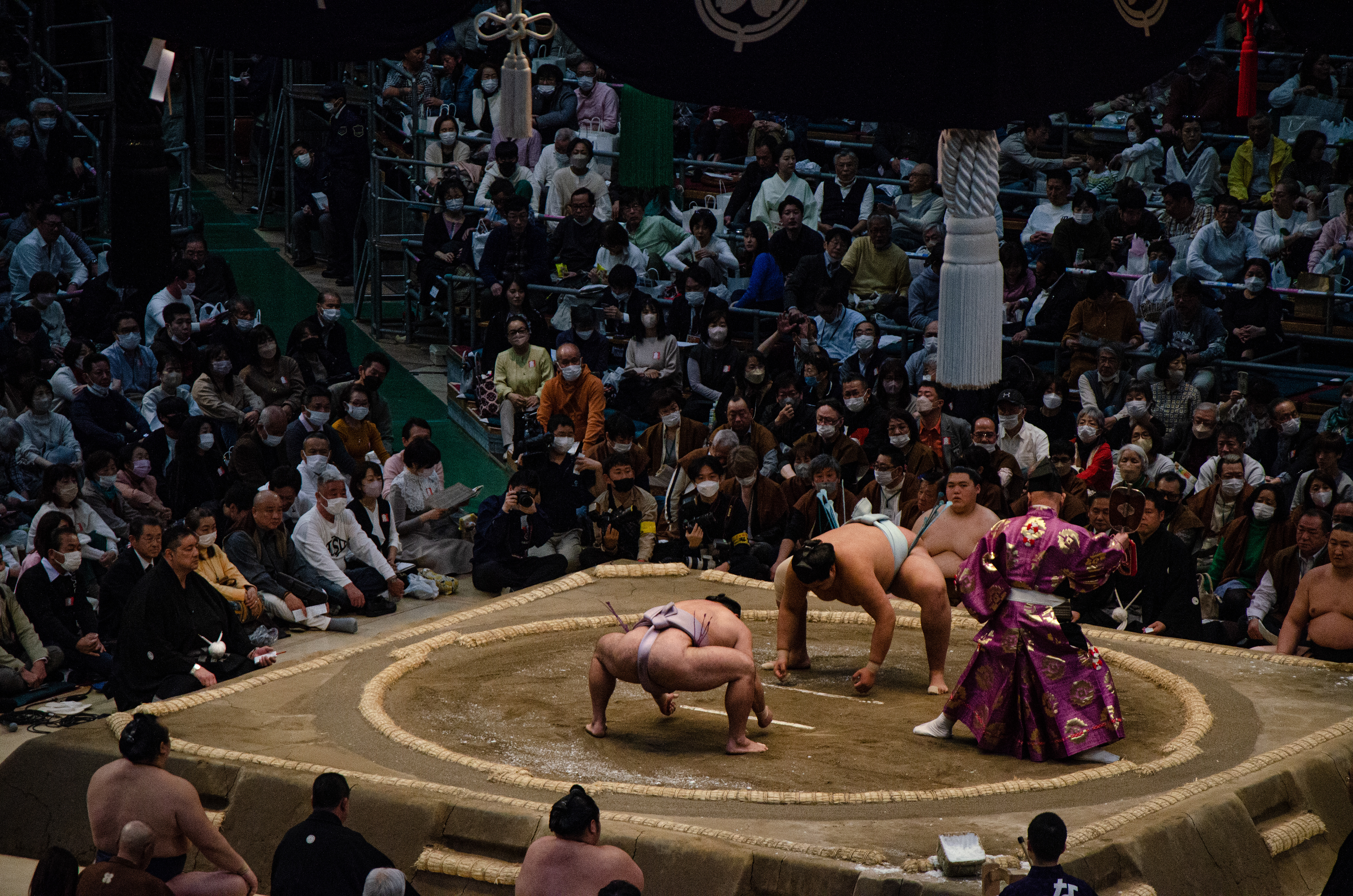


The reason we had planned this trip in the first place during this time was actually to attend a real sumo wrestling match, which took place in Osaka. They are notoriously hard to attend, and the matches in Tokyo had already passed, so it was great we were able to make this one and fit it into a Kyoto trip. We made it all the way to Osaka before I realized I had left our sumo tickets back at our airbnb- oops! After noticing, I quickly bid farewell to the guys and took the train back the other way to grab them. We had planned to go to a big onsen during this time, but thankfully they were happy to wait for me so we could all go after sumo. Before sumo viewing, we had made a reservation at a Teppanyaki restaurant which served Kobe beef, basically the highest quality beef that exists. Kobe is right next to Osaka, and since we didn't know when we would ever be this close again, we thought it only made sense to try the meat despite its price tag. The meal was about $70, but I would venture to say that it was definitely worth it. The meat tasted different from any I've tasted before, and had an incredible depth which took you on a trip through several different flavors. It somehow tasted more like meat, but not in the gross way that a normal undercooked cut of meat would be. You could practically taste the cow's soul. We then showed up at the sumo stadium at the perfect time to see the best fighters of the day. It was amazing to see not only how huge the wrestlers were, but also how nimble and athletic they remained. The fights are usually over in under 20 seconds, and there are no rounds, just one match. They are extremely respectful: the fight only starts when both hands of each wrestler has touched the ground, and if one isn't ready, they can just stand up again and drink some water or stretch. It's interesting that so many months of preparation culminate in one tiny match; I suppose that's the thrill of it though. Once the fight has finished, the loser stands up and walks right out of the ring with no reaction. The winner, also with no reaction, kneels to wait for their cash prize. After the matches, we went to the onsen, which was almost like an onsen amusement park. They had lounging areas, a library, a strolling rooftop garden, an arcade, a restaurant, and of course, the onsen. There were five different pools, as well as a cold water bath and a sauna. My favorite pool was the carbonated one, where you could feel bubbles popping all over you. The sauna was also nice because it was so hot, and there was silly Japanese game shows playing on a TV inside the sauna to watch (another example of Japan's love for media, but I didn't mind it in this instance).























On Monday, we went to Nara Deer Park, which is a huge park with grassy areas, shops, and temples. There are deer everywhere, and they are totally used to humans. You can buy biscuits to feed them, but we didn't do this. As can be seen in the above video, they have learned to "bow" to people as a way to ask for snacks. The huge temple here is Todai-Ji, which is actually about 2/3 its original size. The original structure burned down, and when it was rebuilt the strategy for building on the same scale as before had been lost to history. Inside you are greeted by a giant Buddha, as well as other very detailed statues.


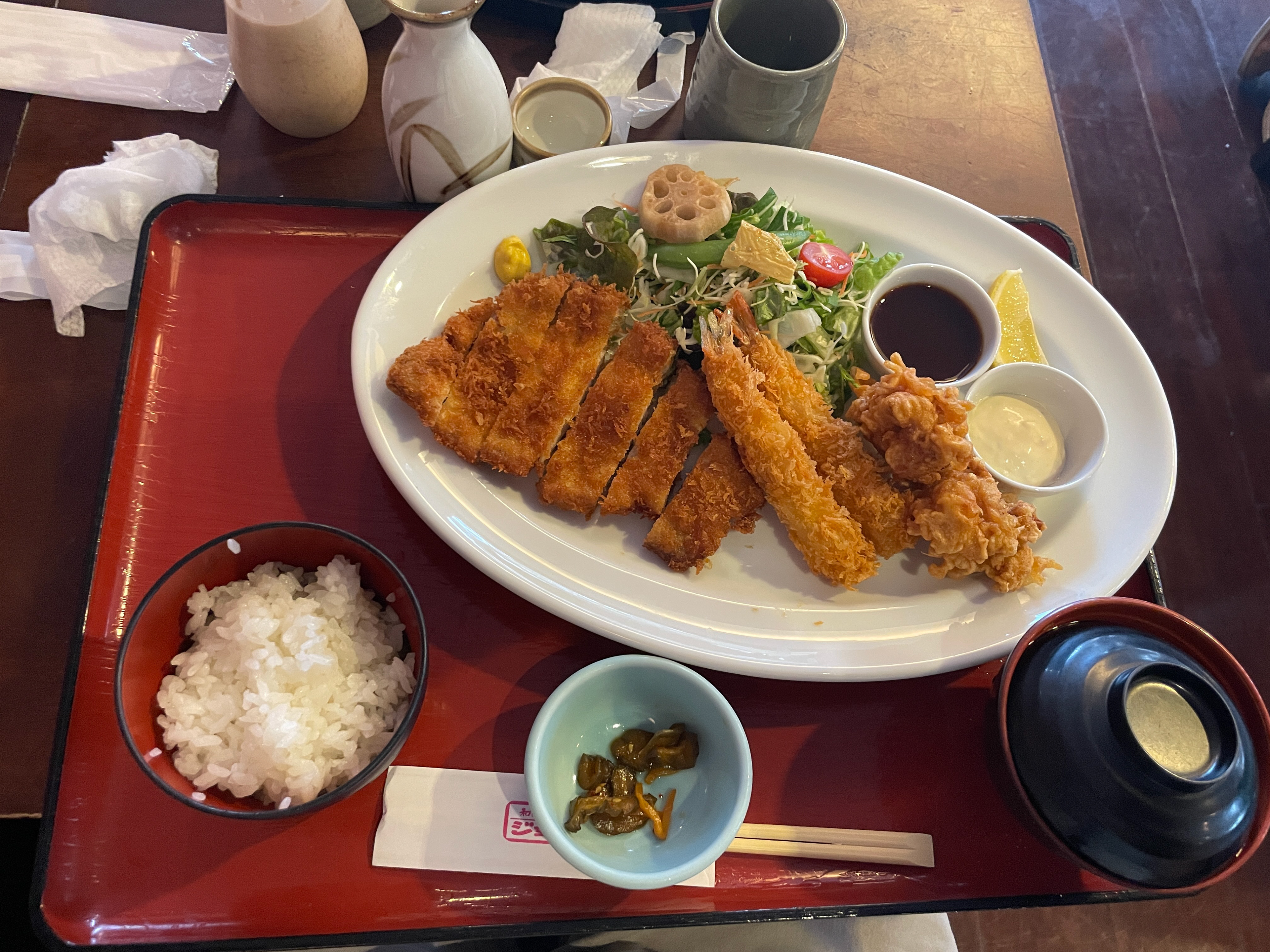








We began Tuesday by visiting Kinkaku-Ji, the Golden Pavilion. I have had a miniature model of this temple in my room for many years, and have seen so many pictures of it that it was pretty surreal to see it in person. It is extremely beautiful. We happened to see our other friends from the dorm here, as several other groups chose this weekend to visit Kyoto as well. Afterwards, we went to Fushimi Inari Taisha, a famous shrine with very long paths winding up a mountain lined with hundreds of bright red Torii gates. We had to catch the Shinkansen this night, so we unfortunately didn't make it all the way to the top, but I'm not sure if we even could have with how many steps there were! The atmosphere was very calming as it was raining lightly too. We heard cats meowing nearby several times.


In other news, the sakura have finally begun to bloom all around, and the air has a generally more springtime charm to it. It has started to rain more often, but is more warm. This is the kind of weather I had been expecting, and did not pack enough warm clothes for this semester's previous weather. So, it is a welcome change. Next weekend I plan to go to some gardens in Tokyo to view the cherry blossoms.




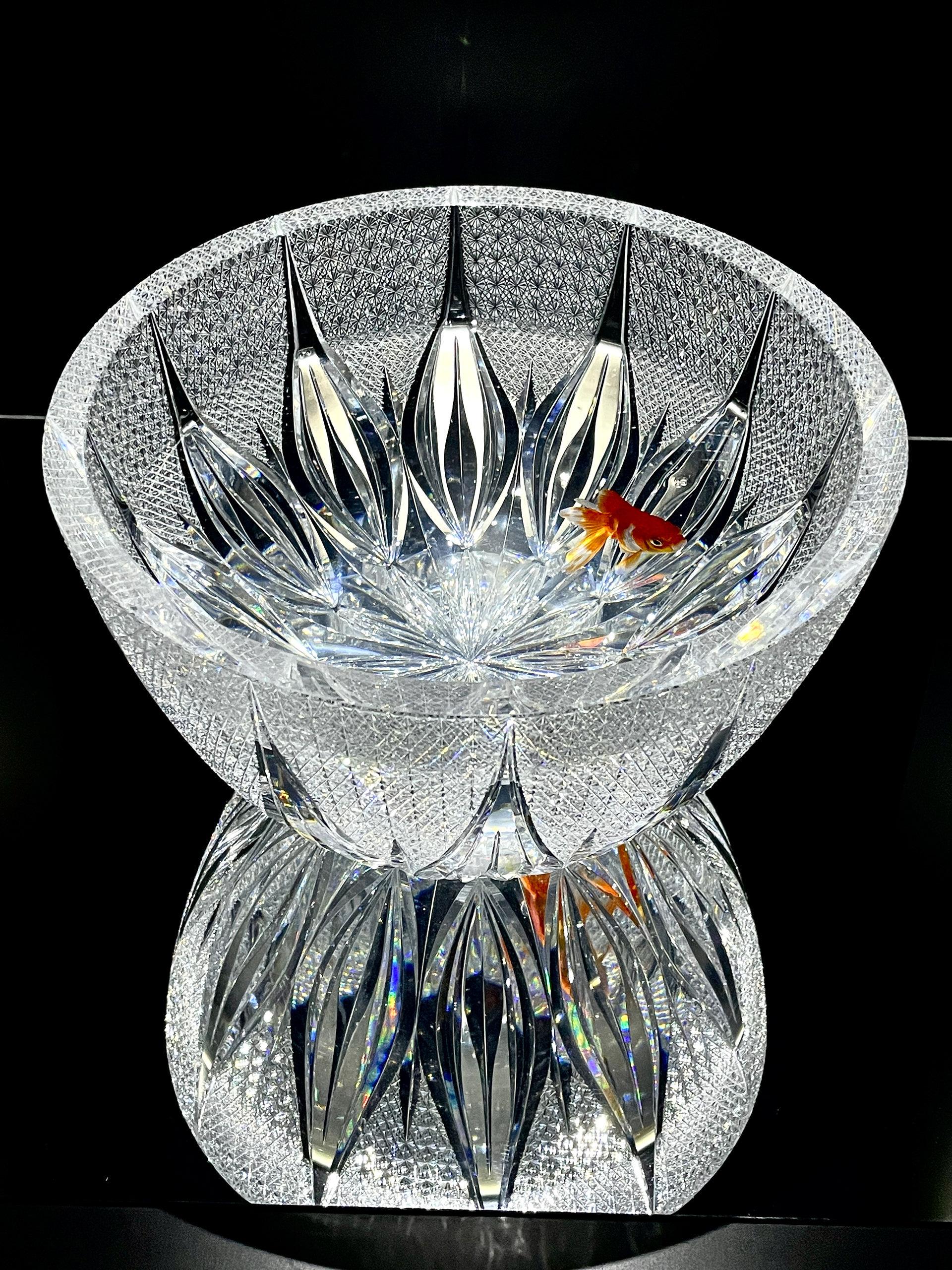


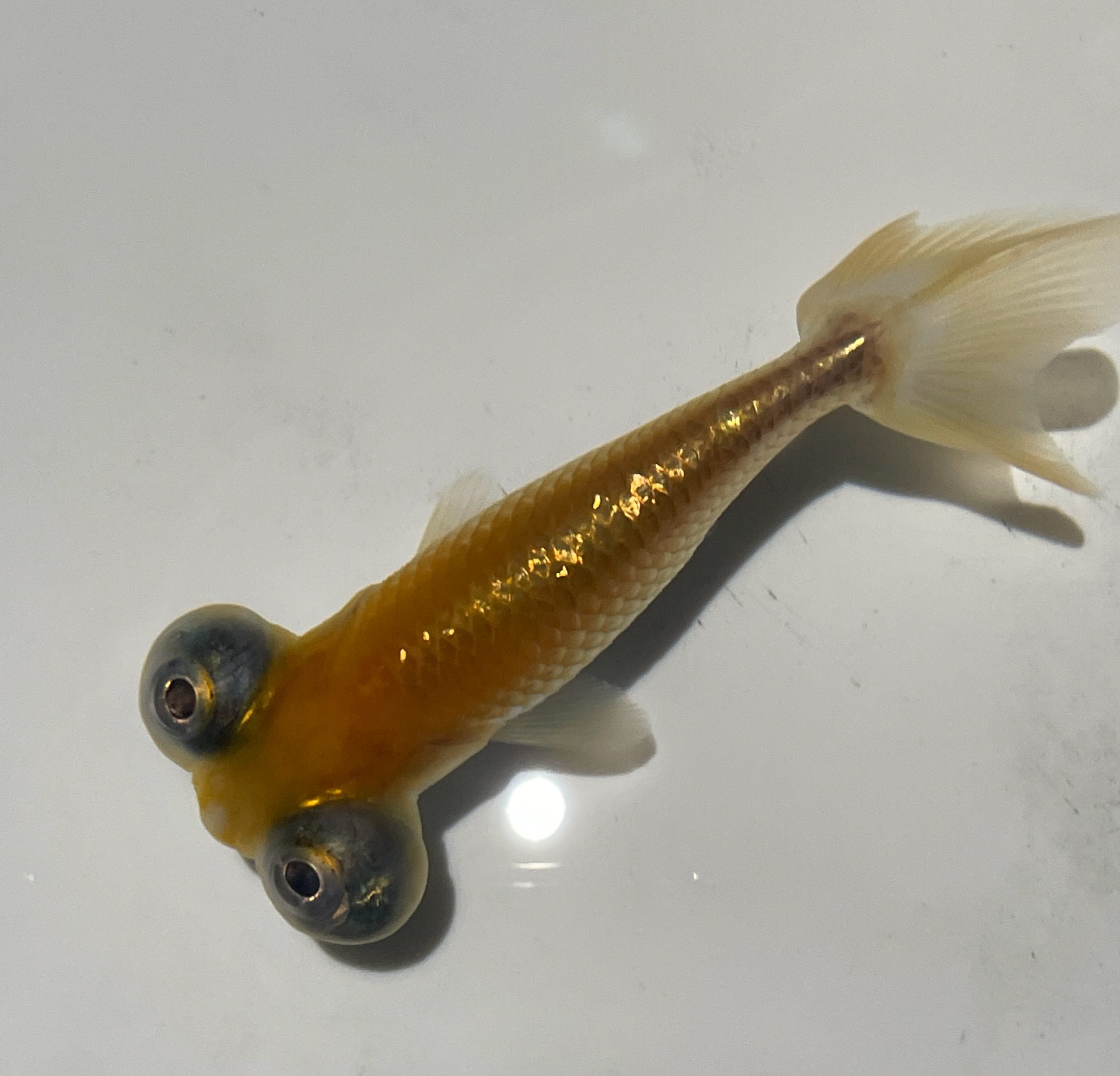




As for this weekend, I didn't do as much, but I did go to a goldfish aquarium exhibit in Ginza with Rachel on Friday. The aquarium was solely goldfish, but there were many different breeds. I didn't know that so many goldfish breeds existed. Some were super chunky, some had huge eyes, some had long tails and bodies, and the funniest ones had very puffy cheeks that jiggled when they swam. None of these characteristics seem evolutionarily advantageous, so I assume these kinds of goldfish were bred specifically for viewing.
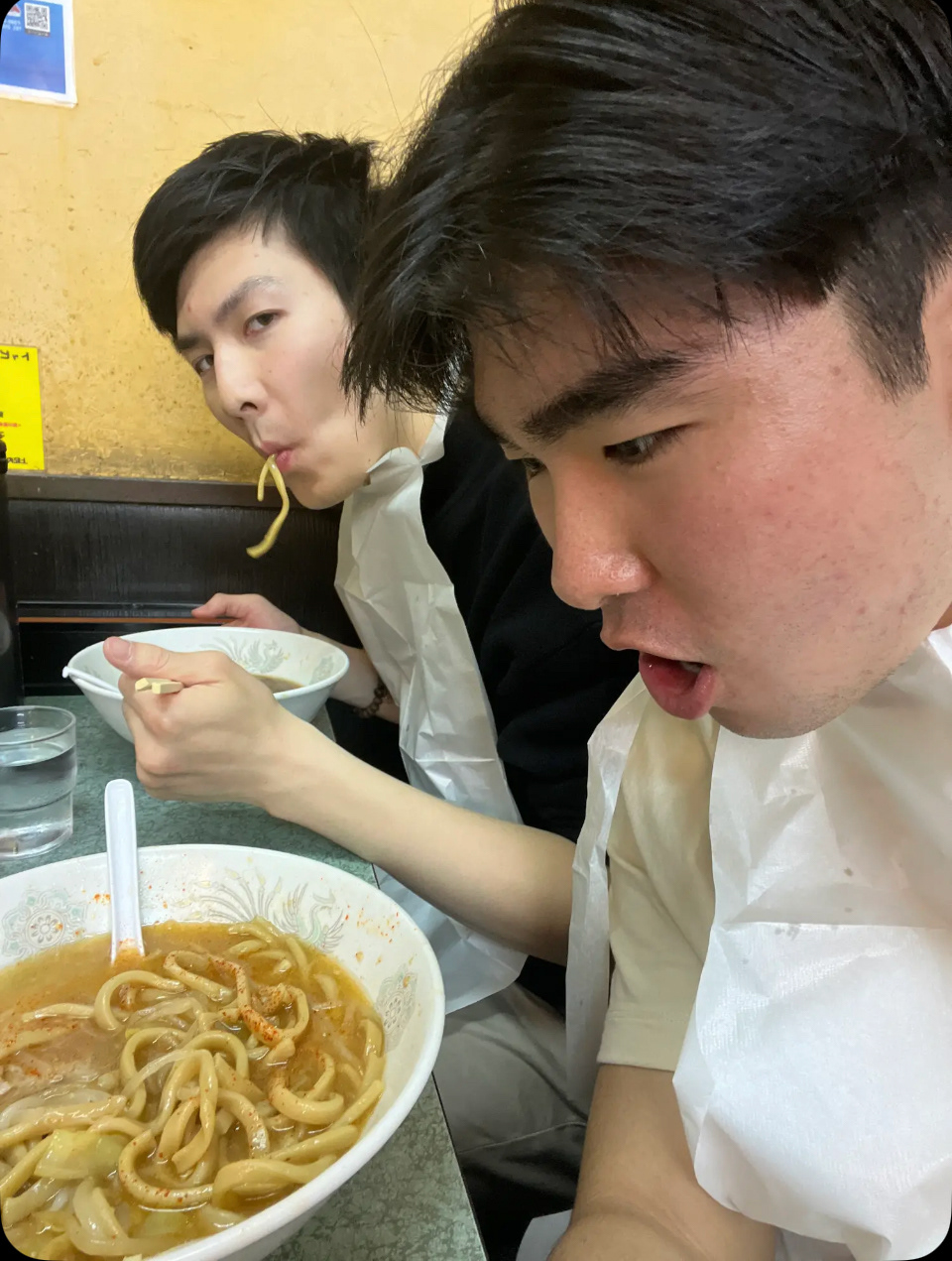
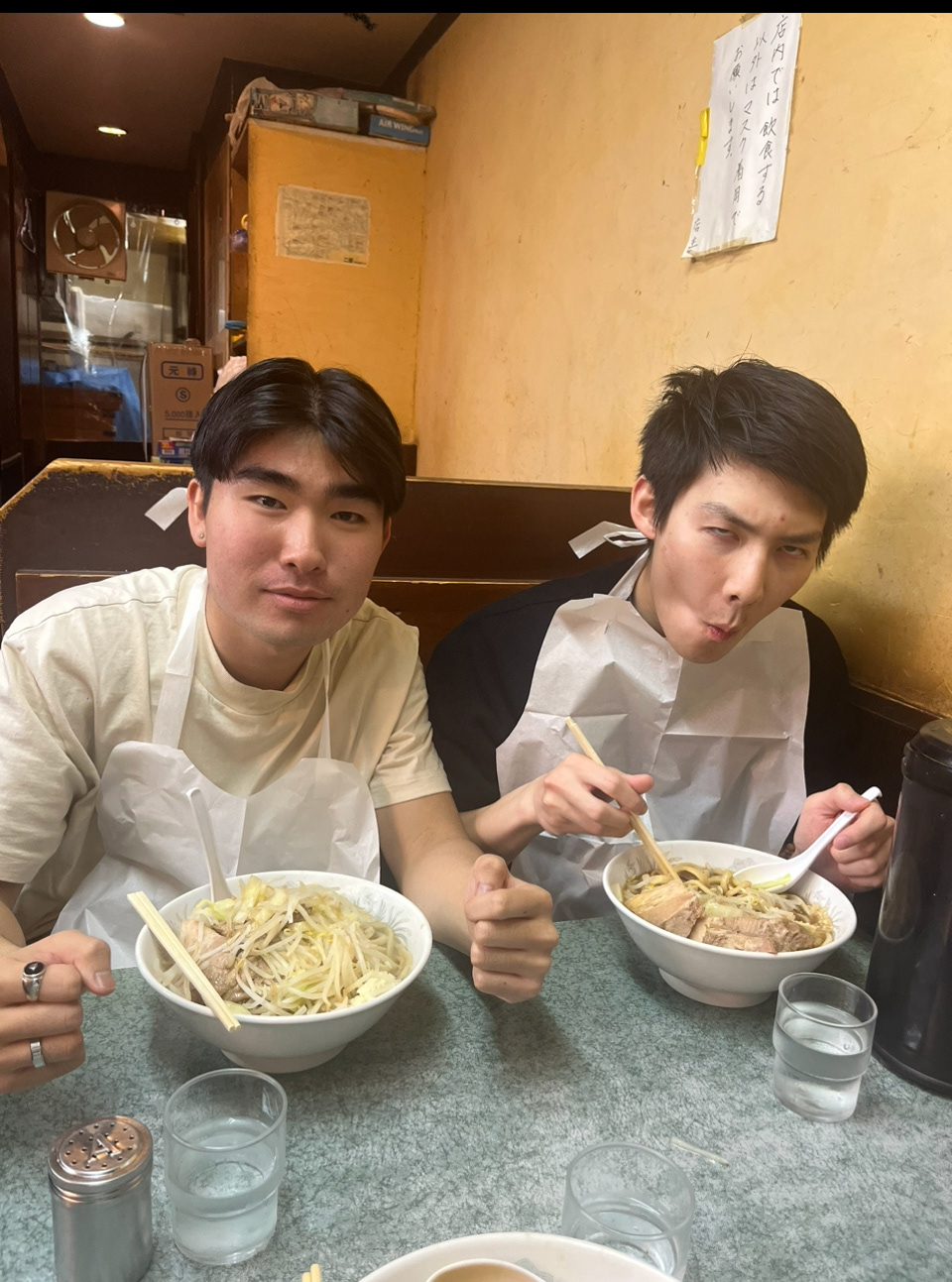



On Saturday night, the guys and I went a second time to a famous ramen spot called Ramen Jiro. If you don’t request a change, they pile your bowl high with bean sprouts which is what they did the first time. This time, we knew better and asked for half as many. They give you thick, tasty cuts of meat, and the noodles are much thicker and more enjoyable to chew than normal noodles. The broth is very strong but very good. We always plan on feeling unwell after the meal. We then walked over to Kabukicho again and just took in the atmosphere while drinking some sake.

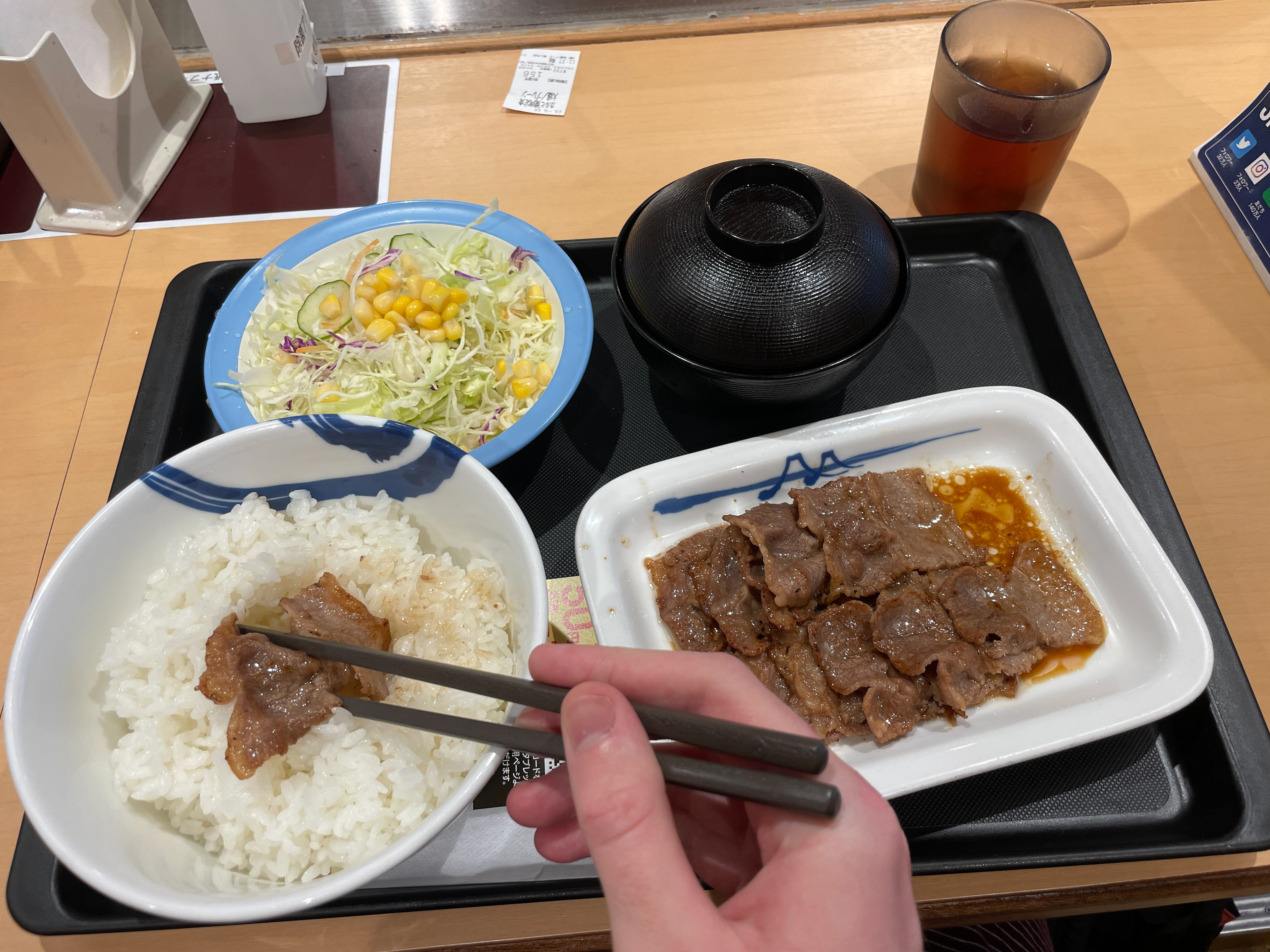
Two other restaurant experiences which I have had often but still haven’t mentioned are Kura and Matsuya. Kura is a conveyor belt sushi restaurant with no waiters. You order sushi on an ipad, and then it is delivered directly to your table through the conveyor belt system pictured. There are many restaurants with the same format, but Kura is the most popular. Matsuya is my go to meal when I need something cheap, relatively healthy, and fast. You order on a vending machine, and then give your ticket stub to a worker who quickly prepares it. I usually get a set meal, which comes with meat, rice, salad, and miso soup, all for 700 yen, or $5.35.